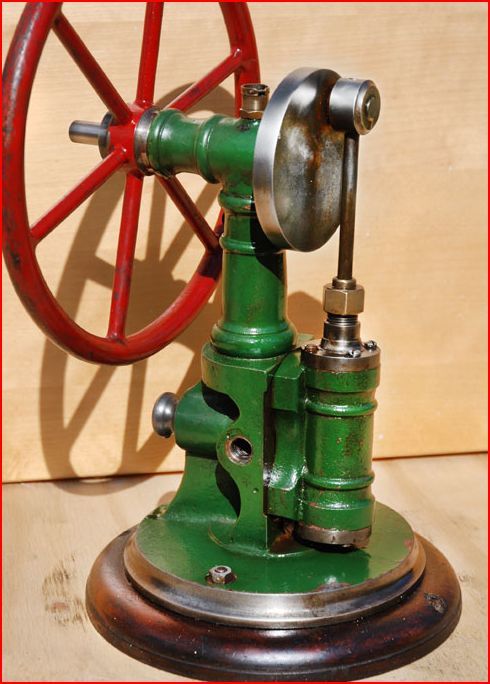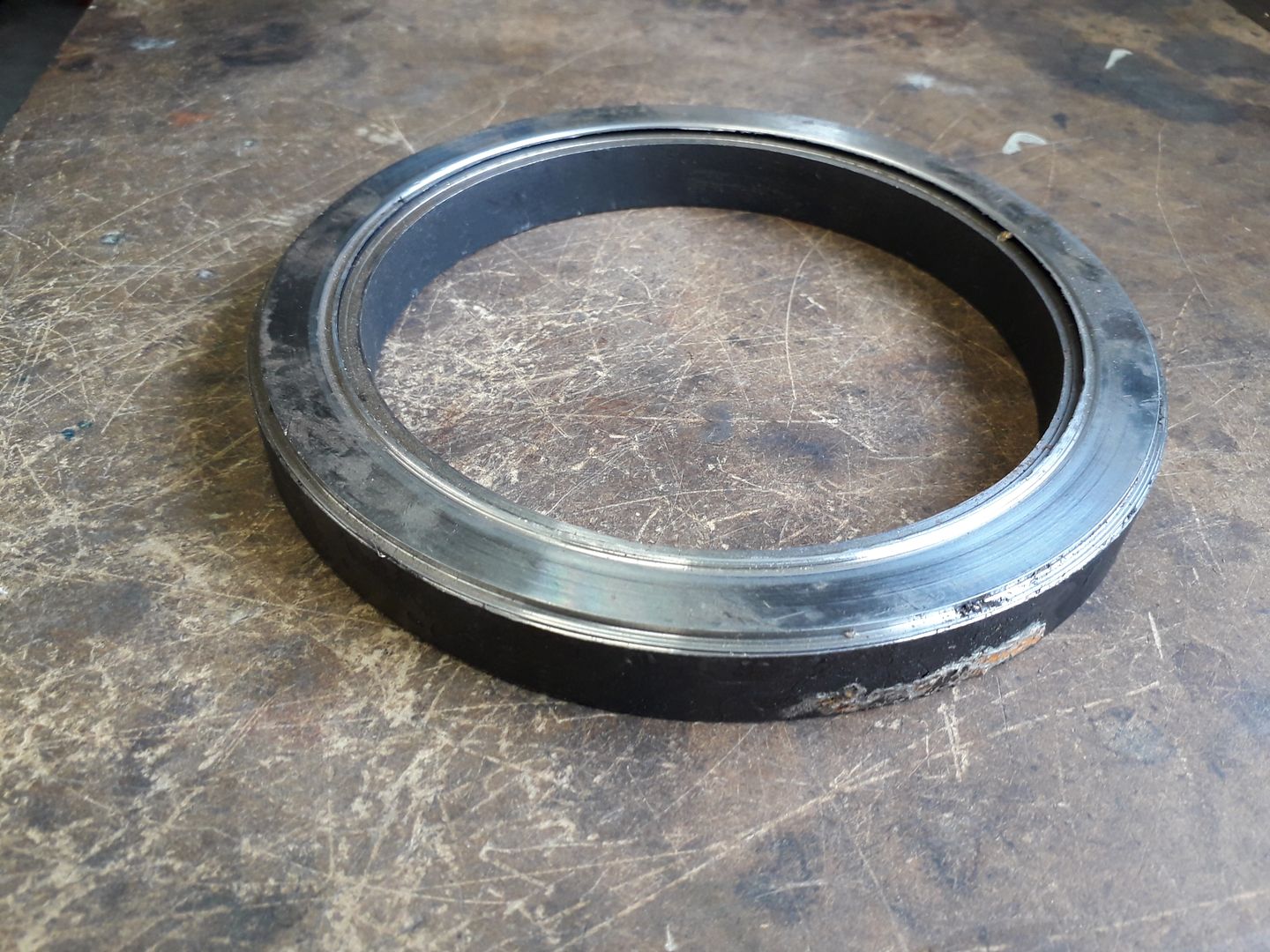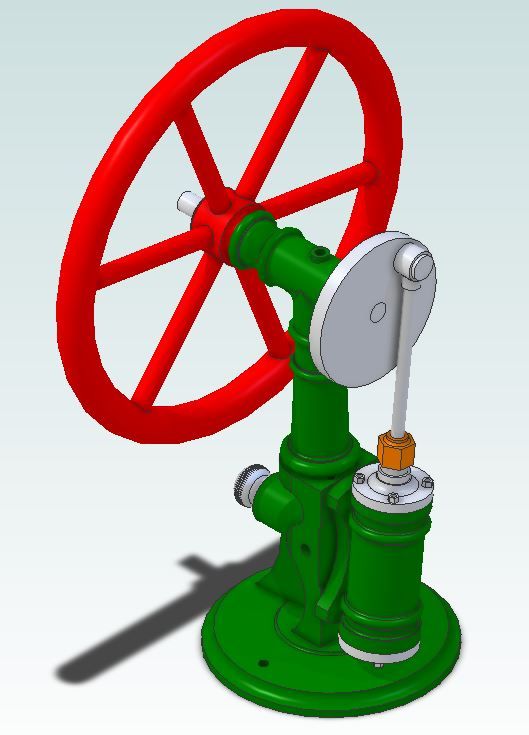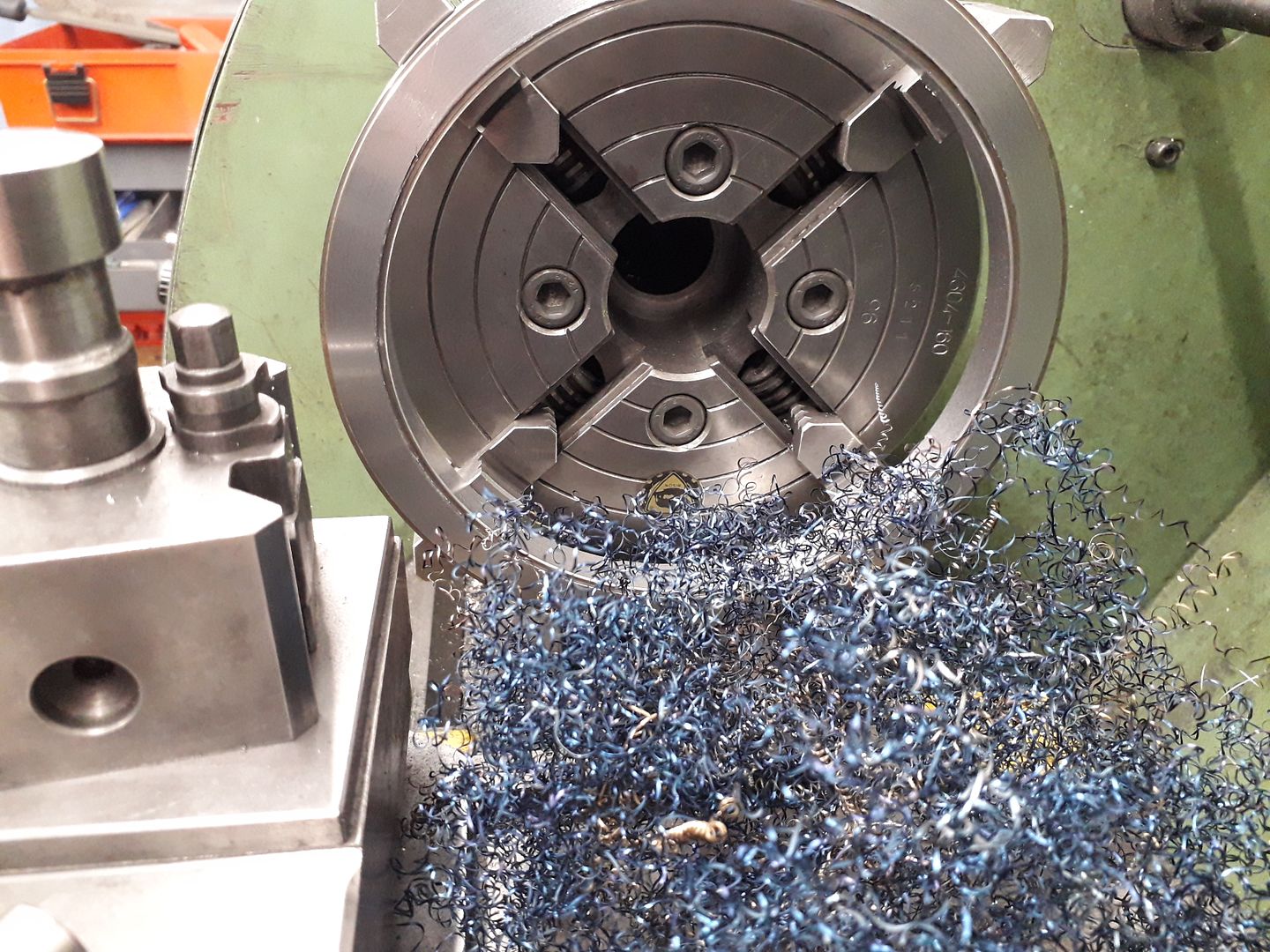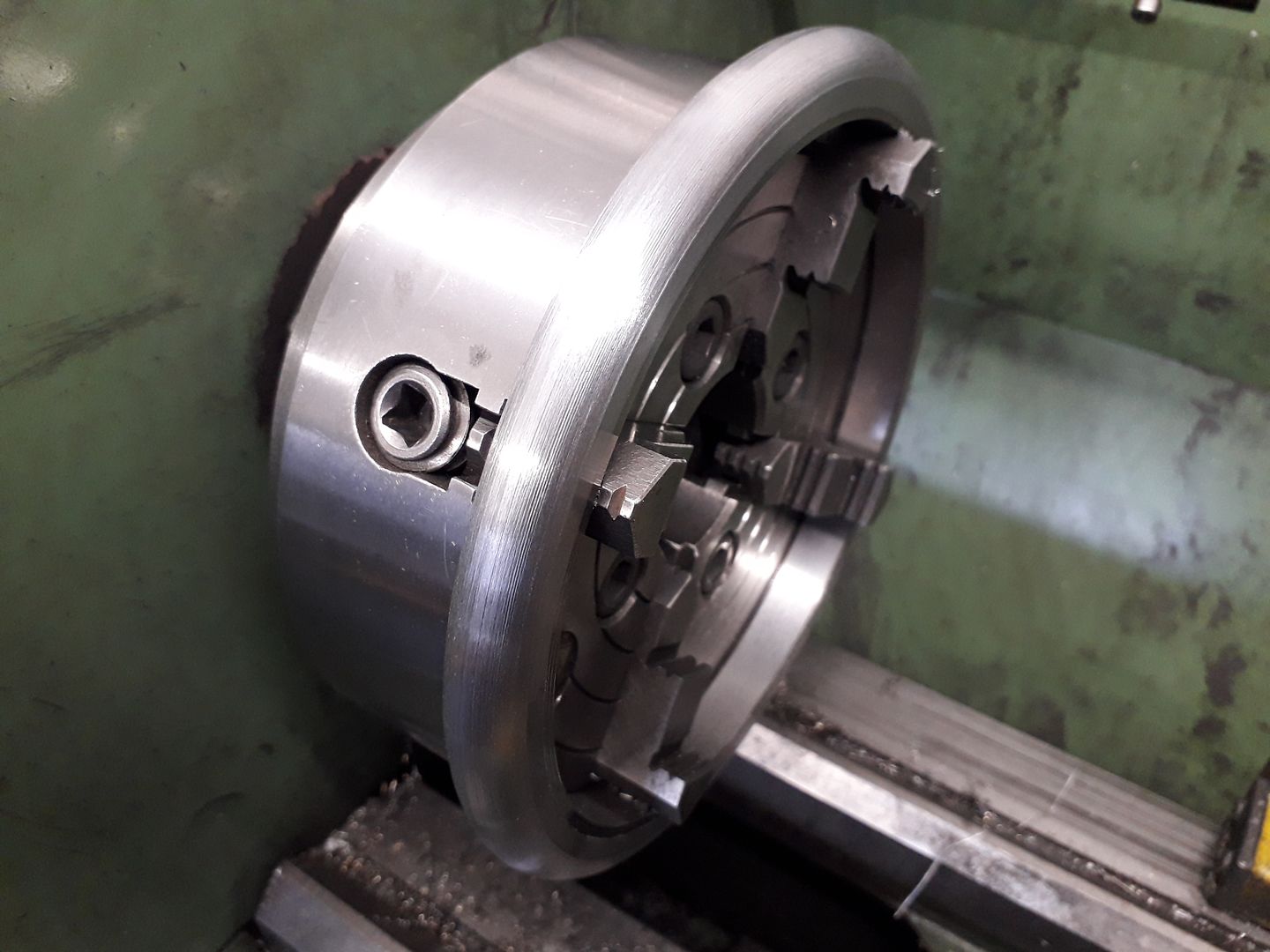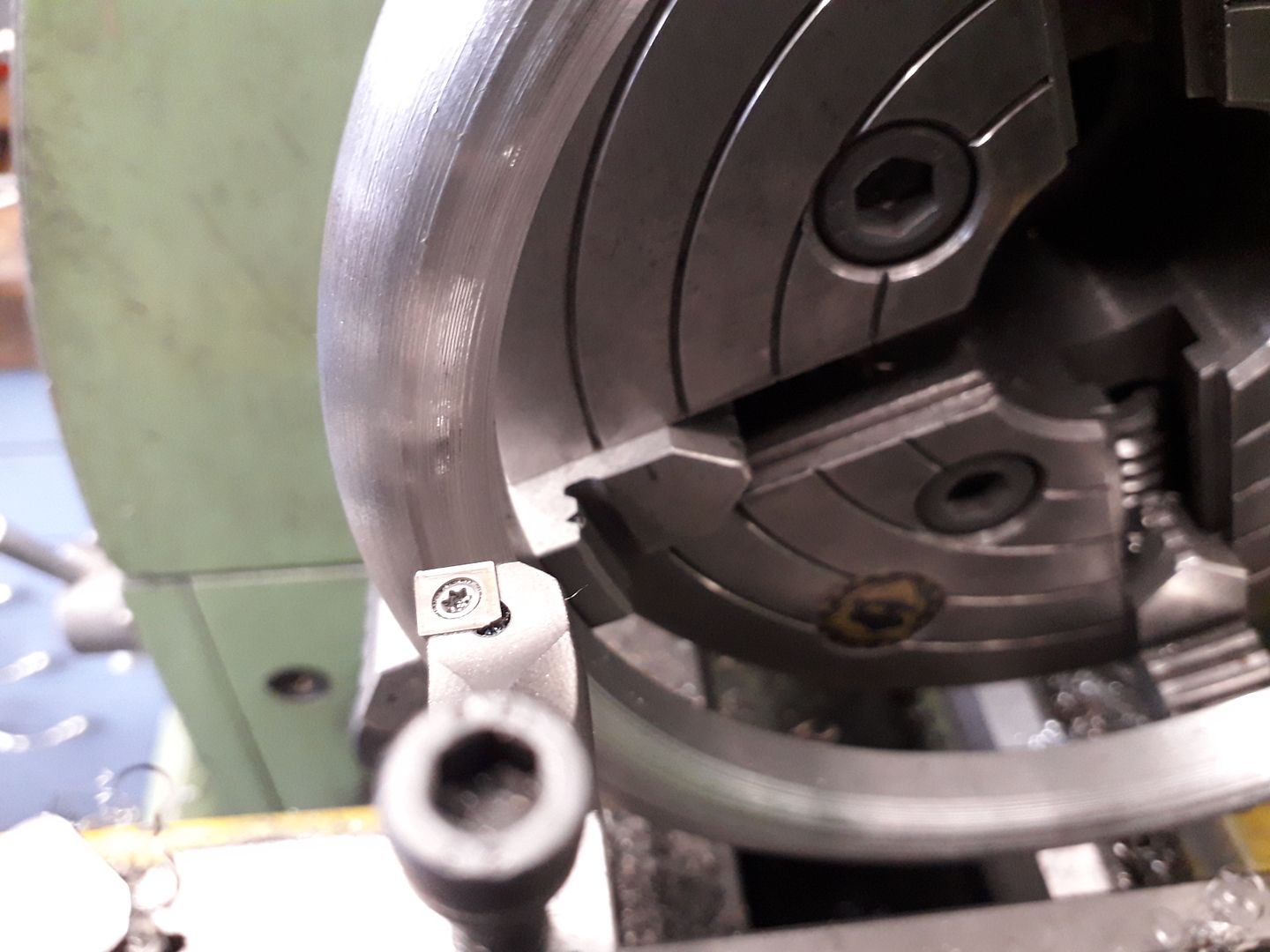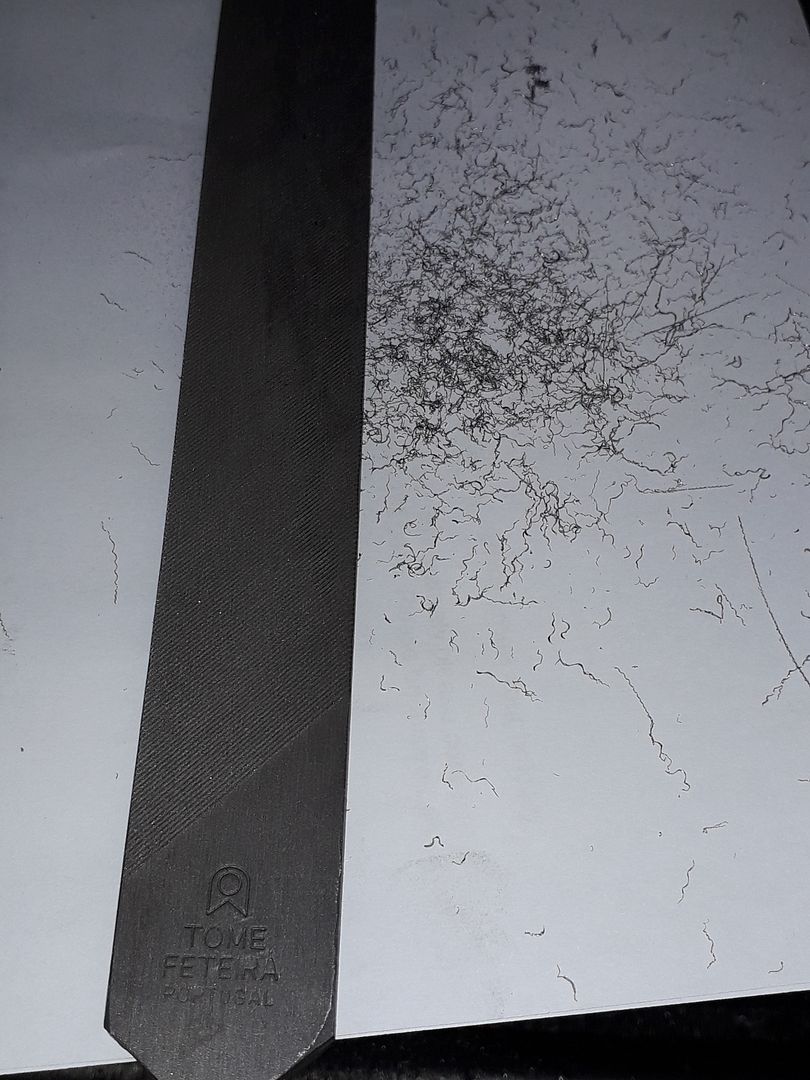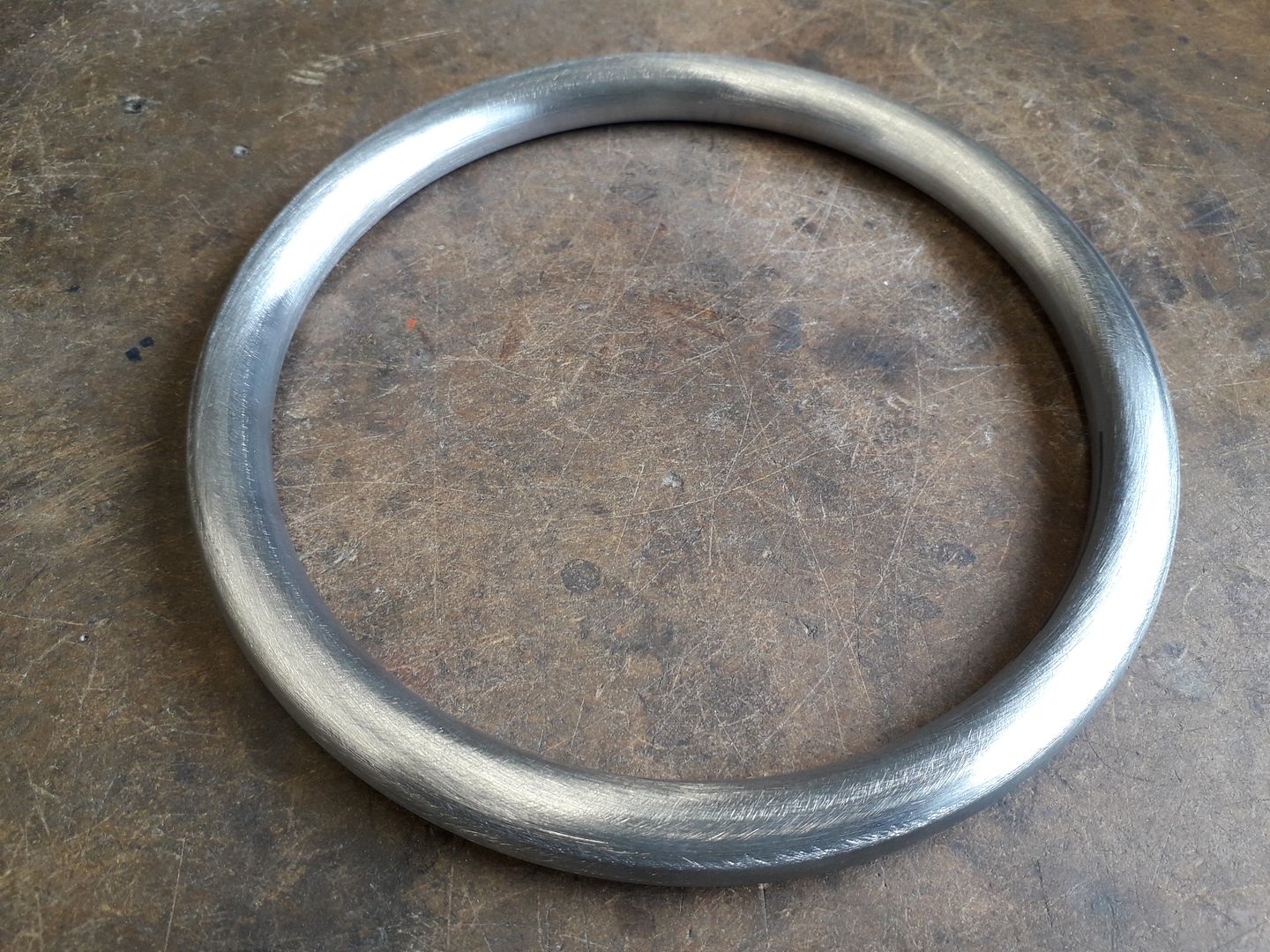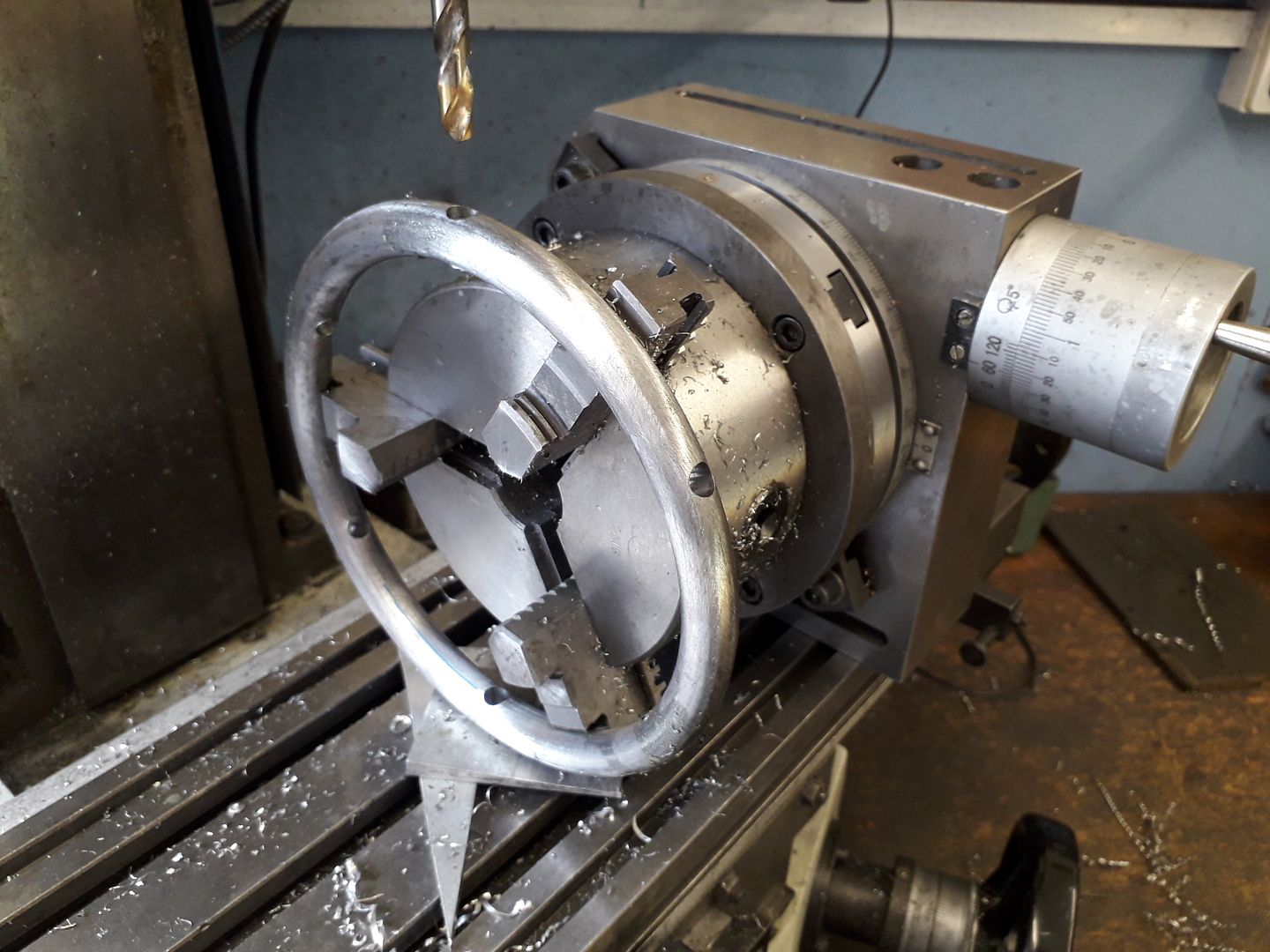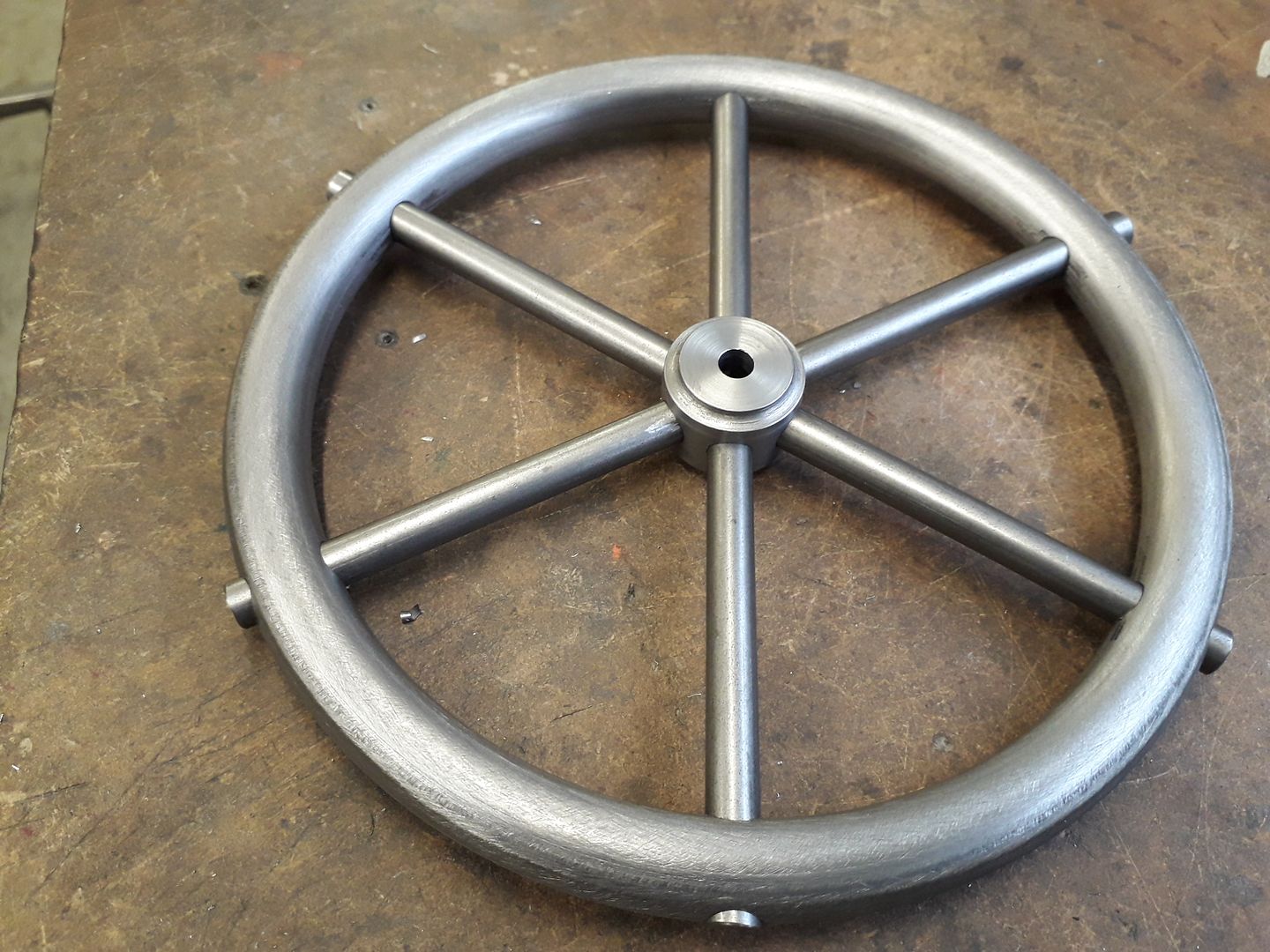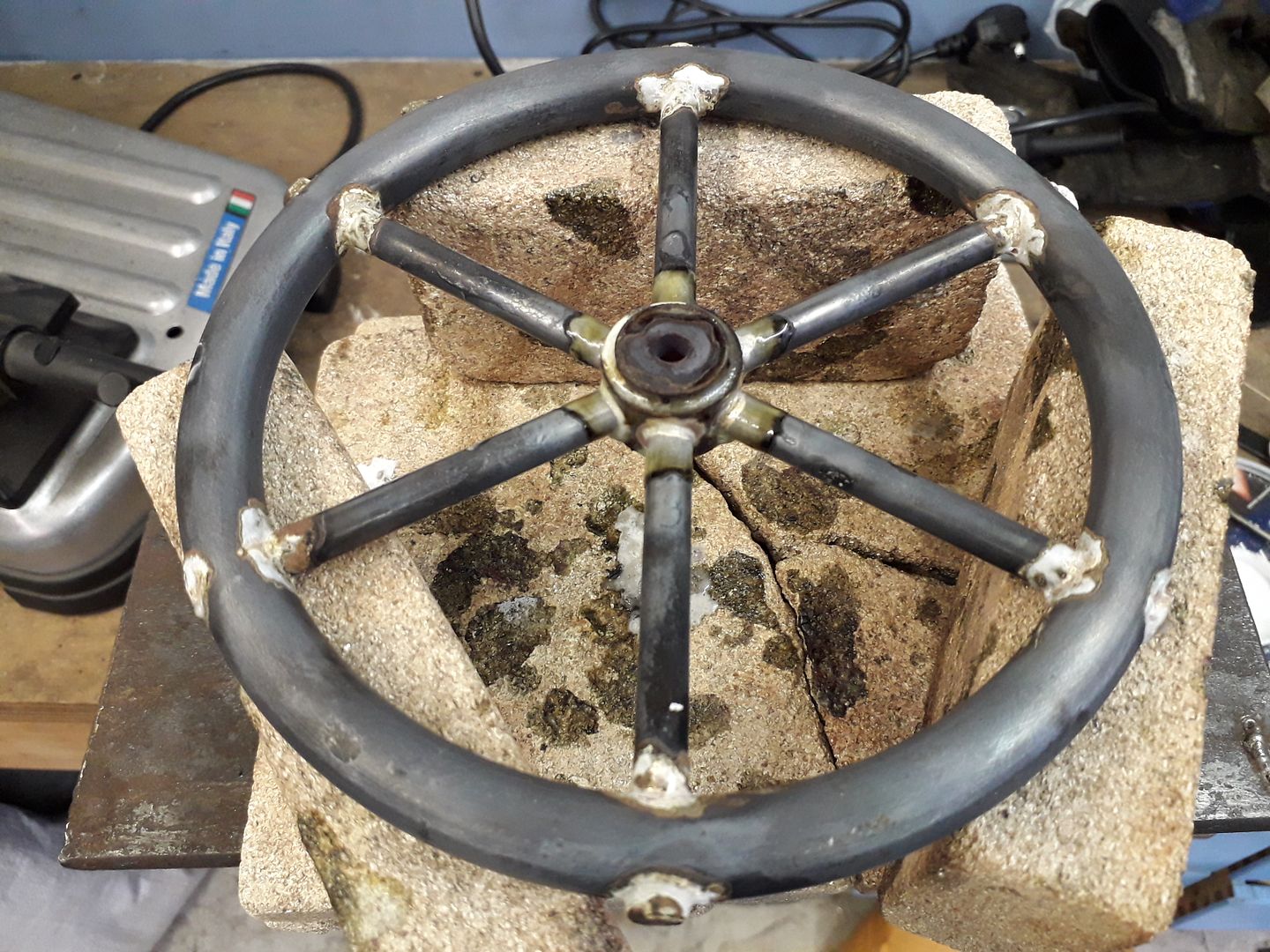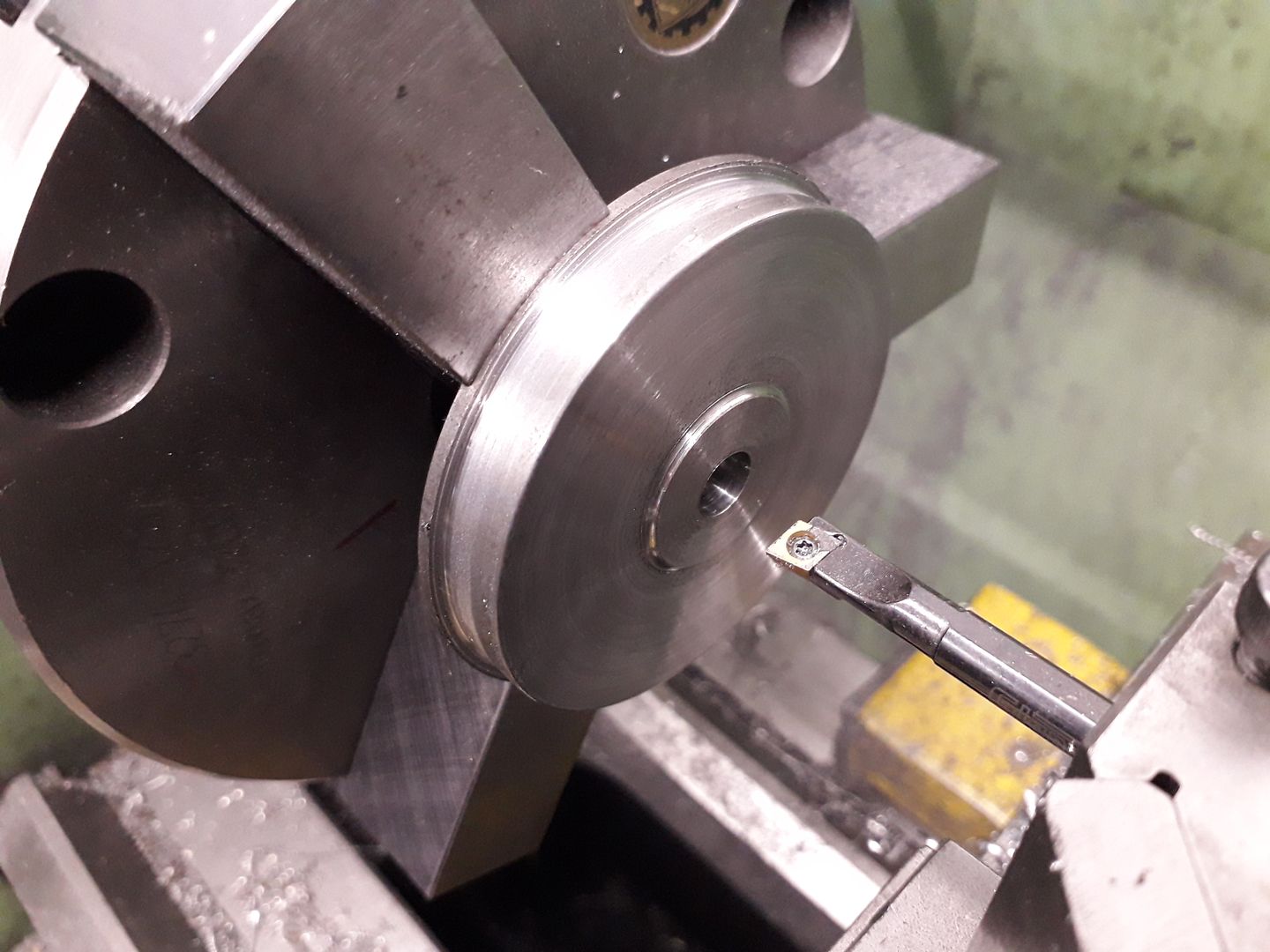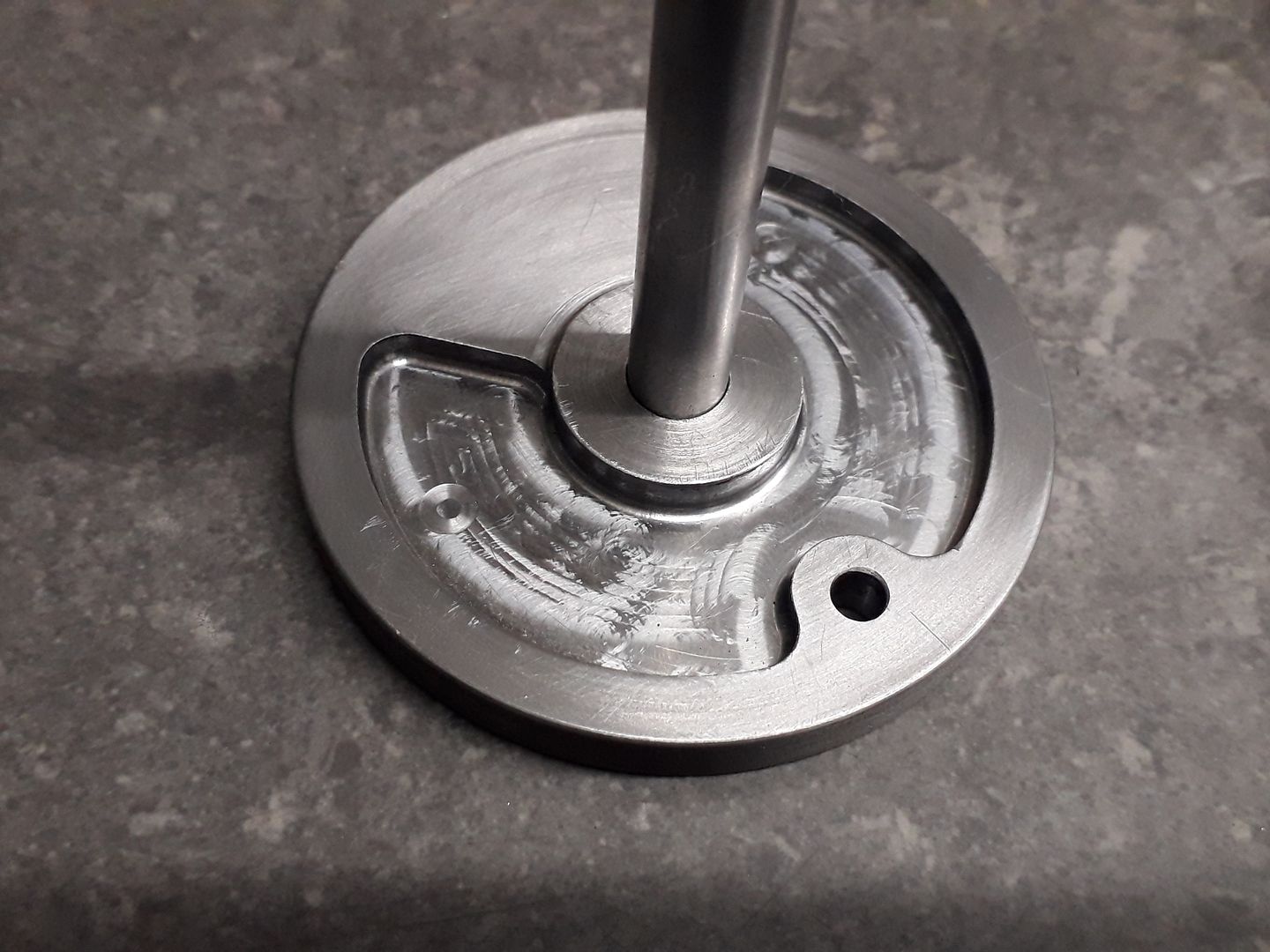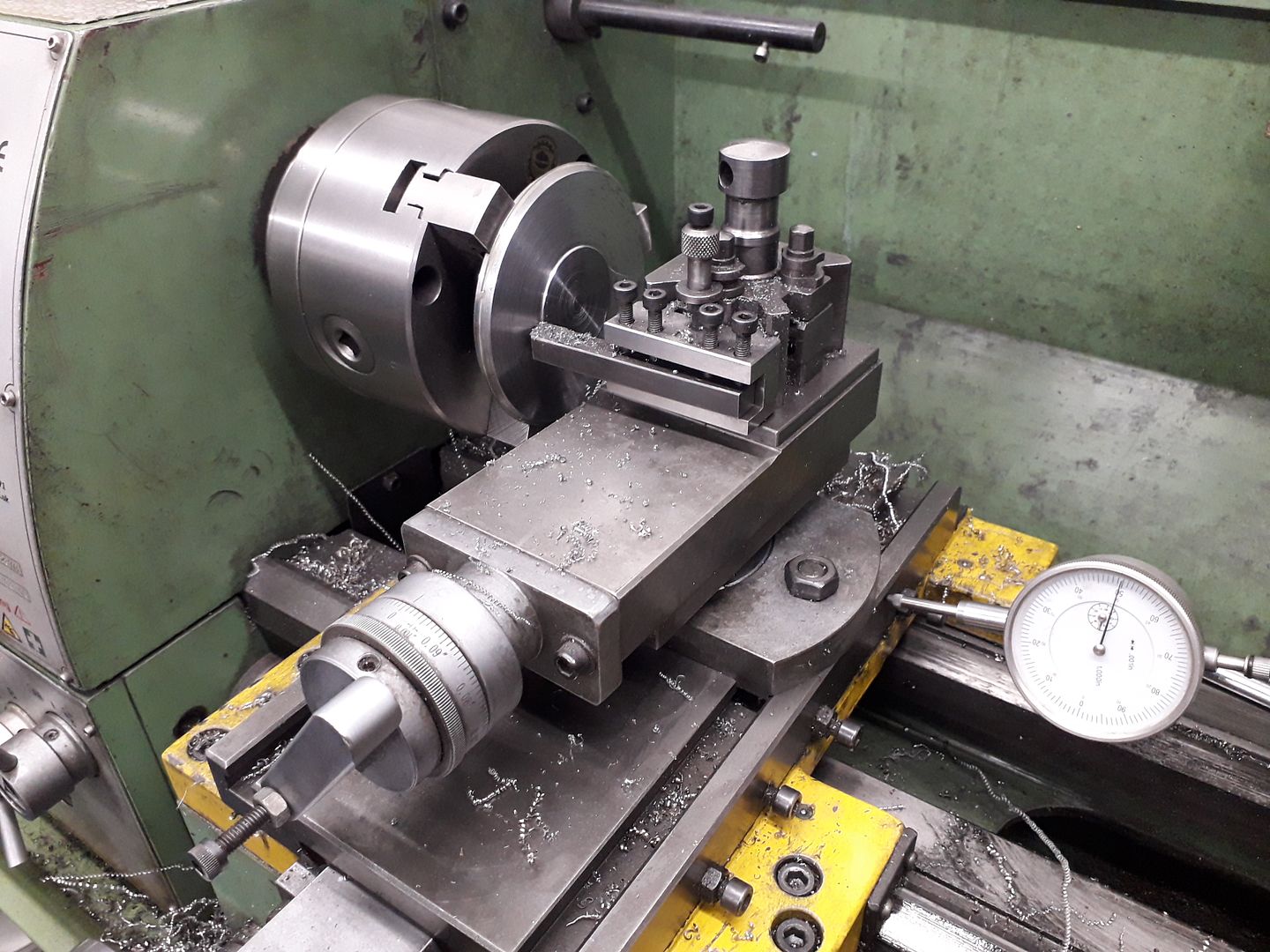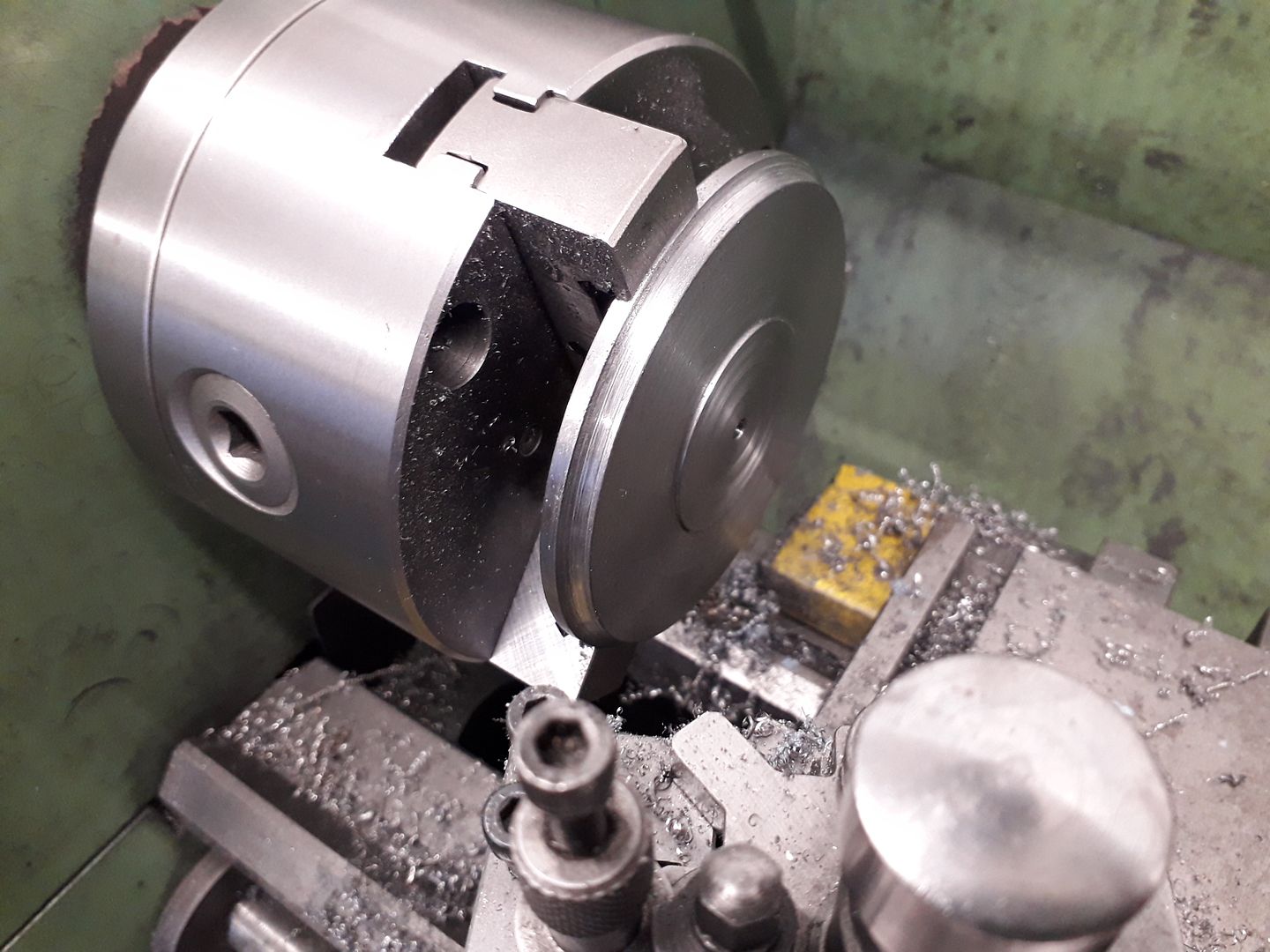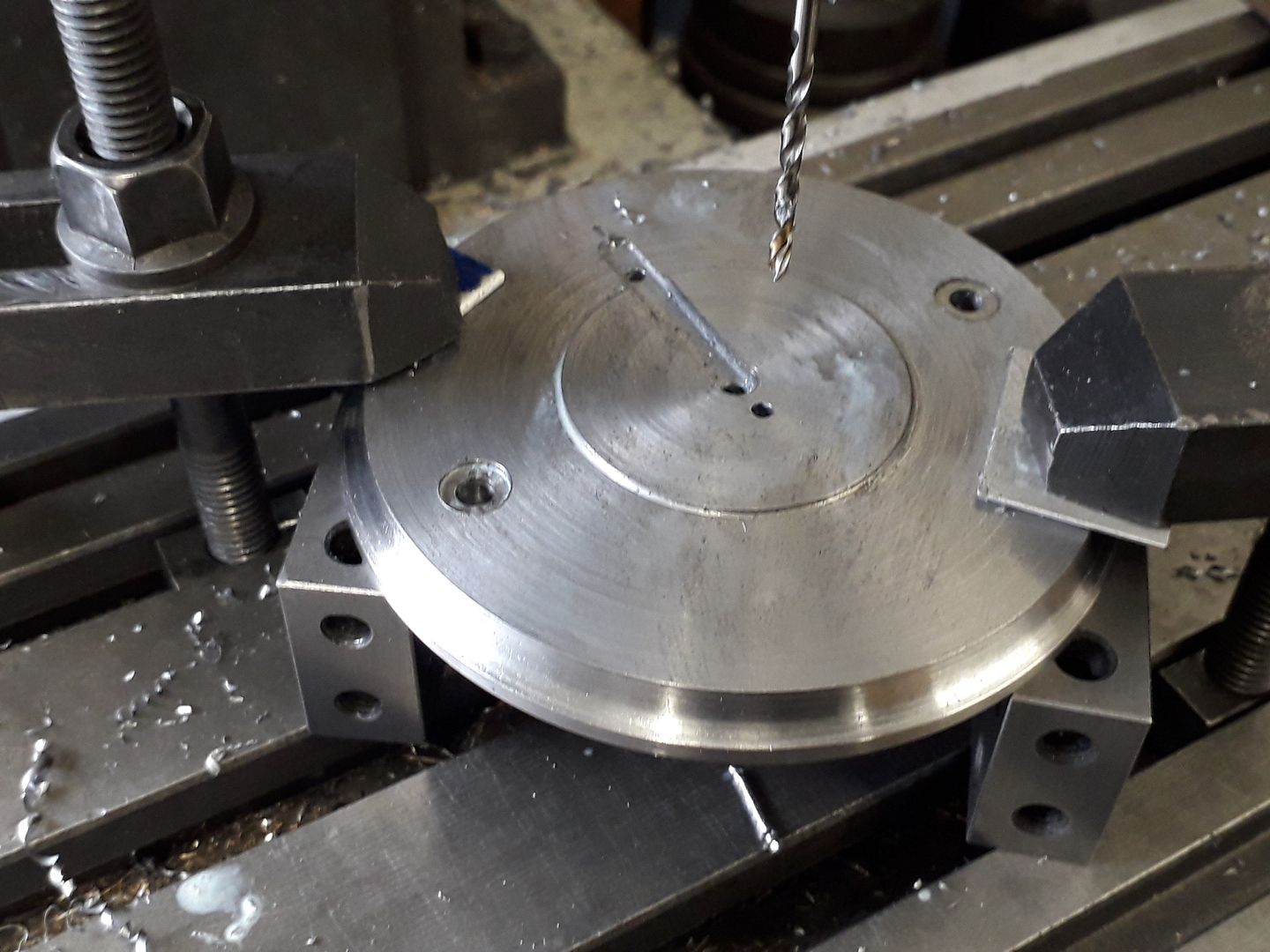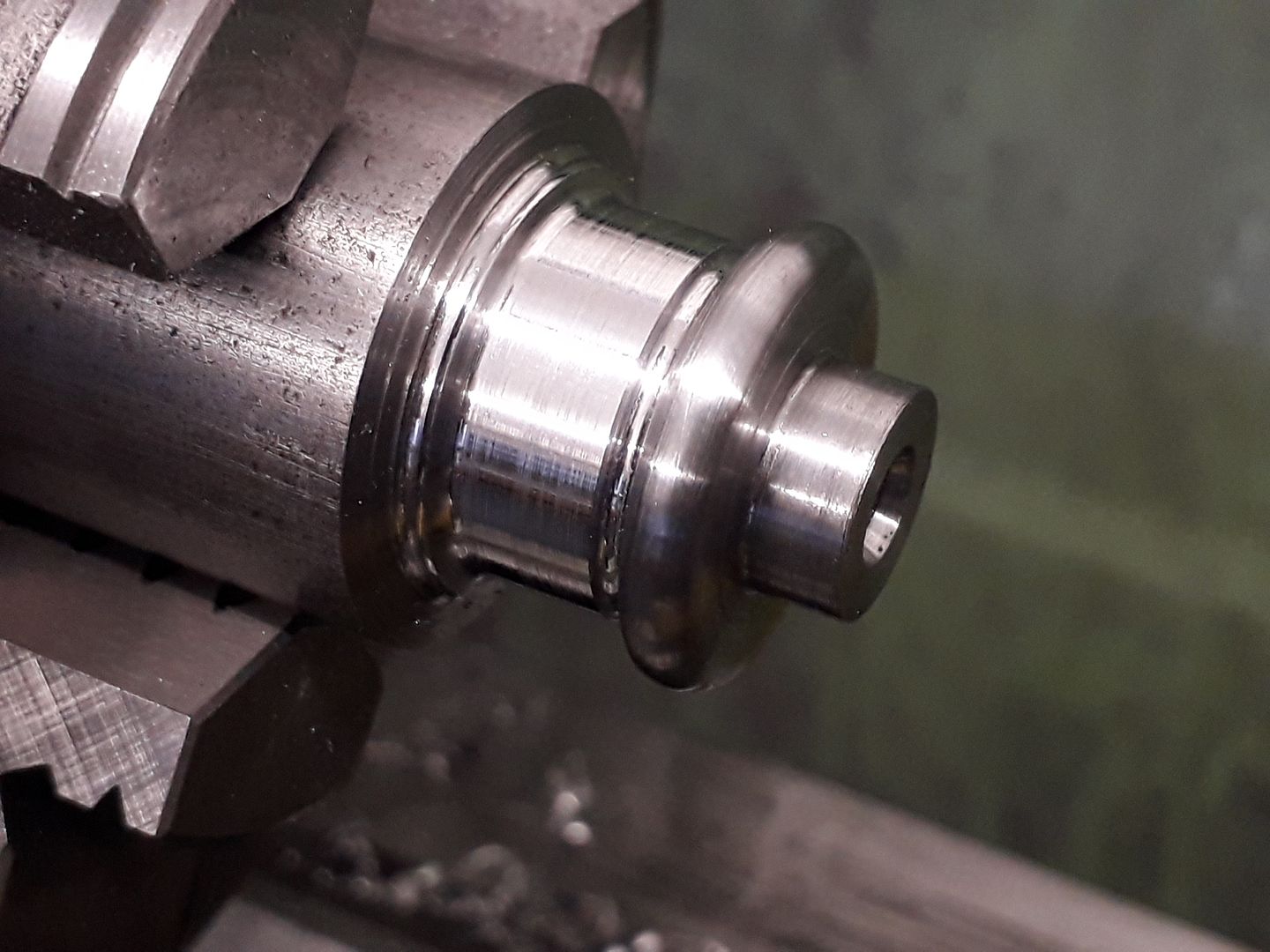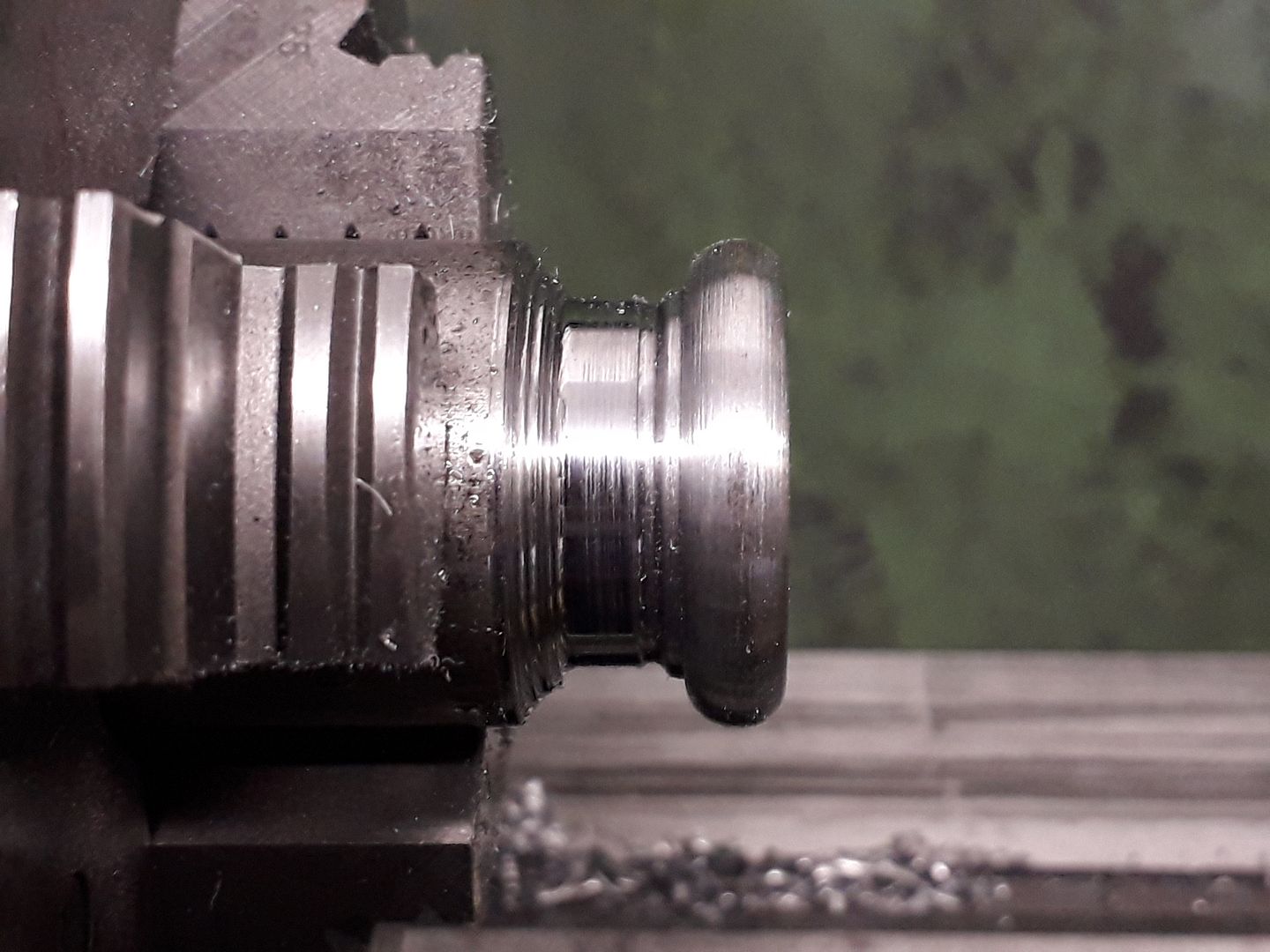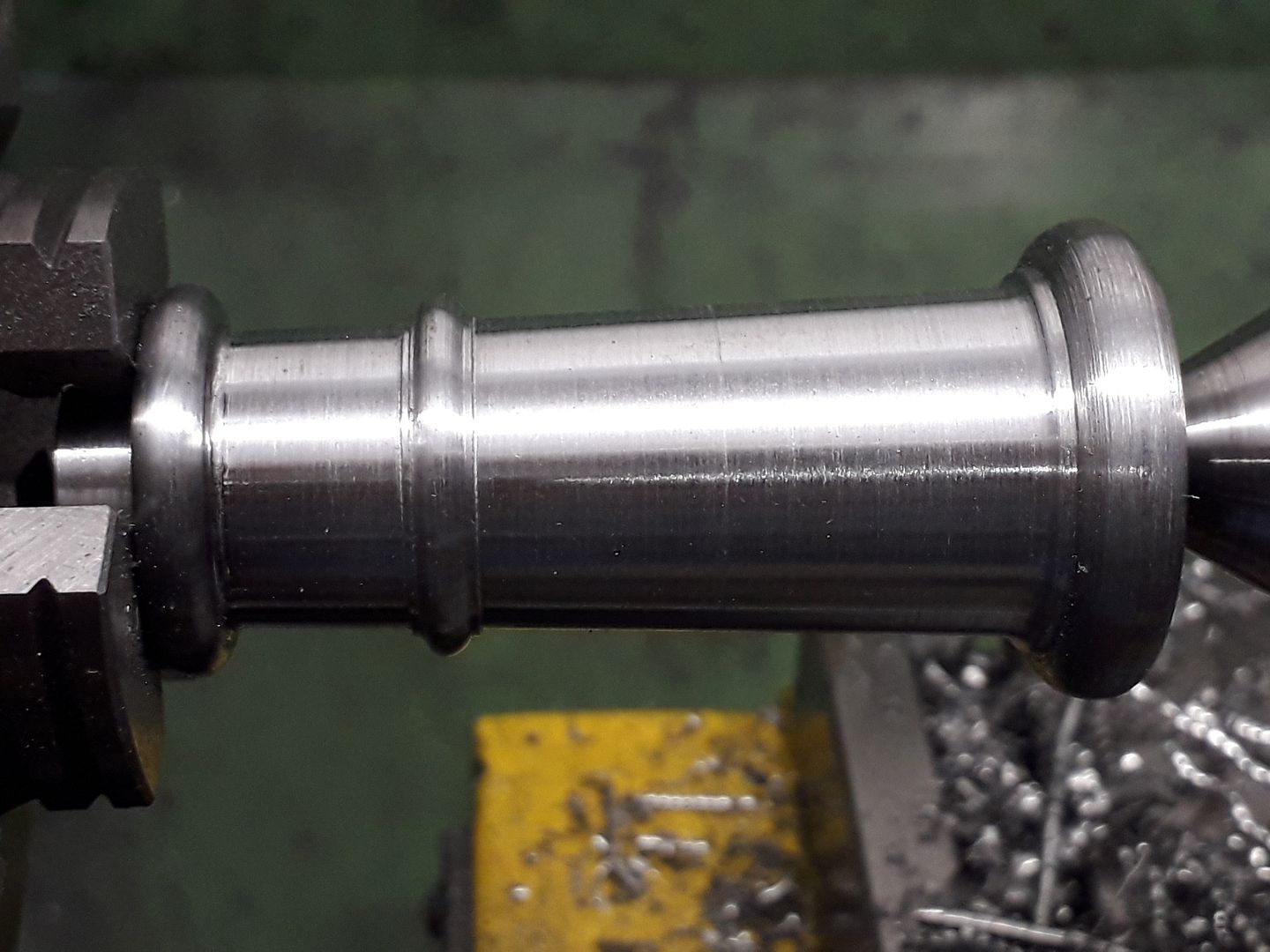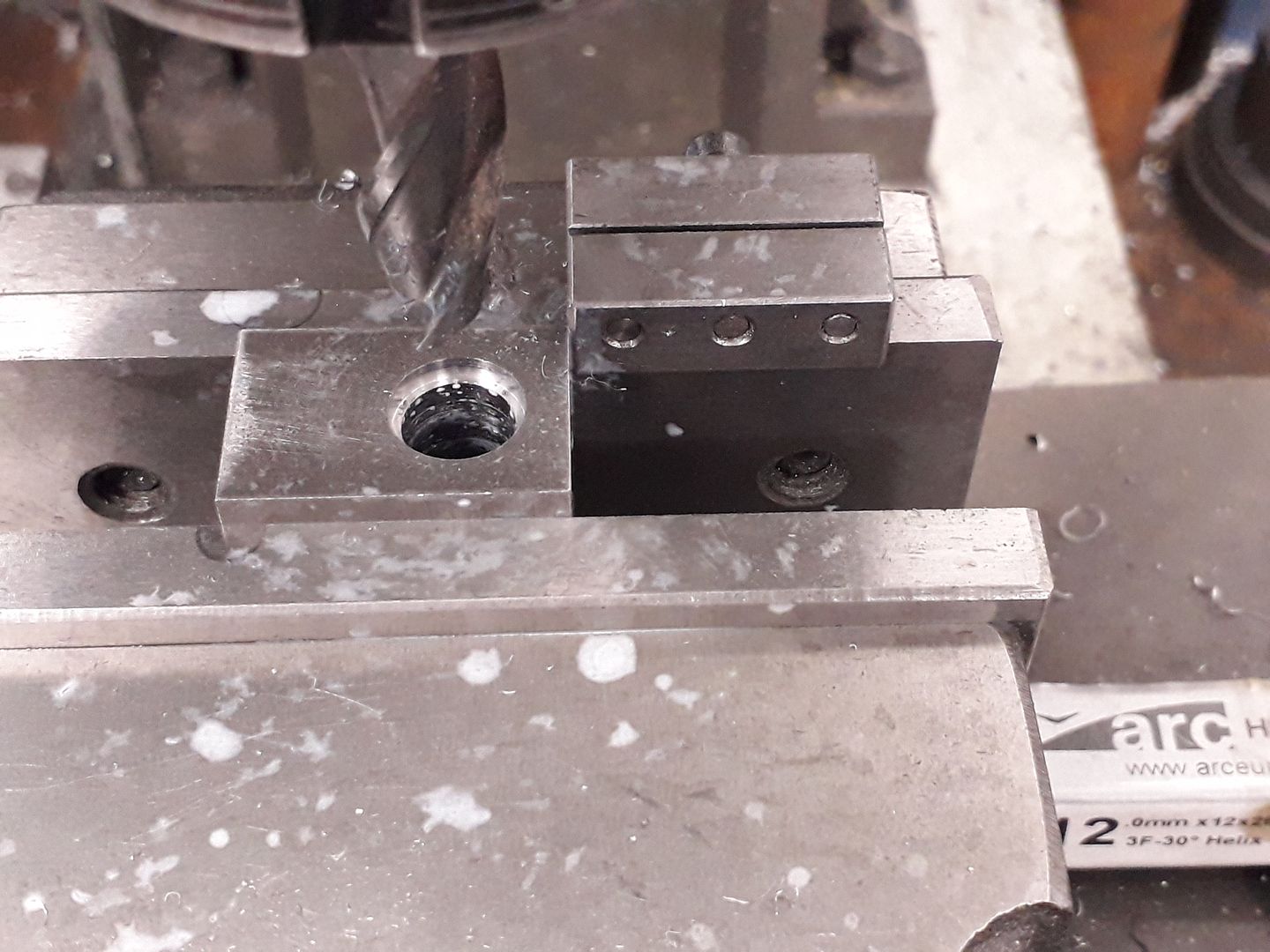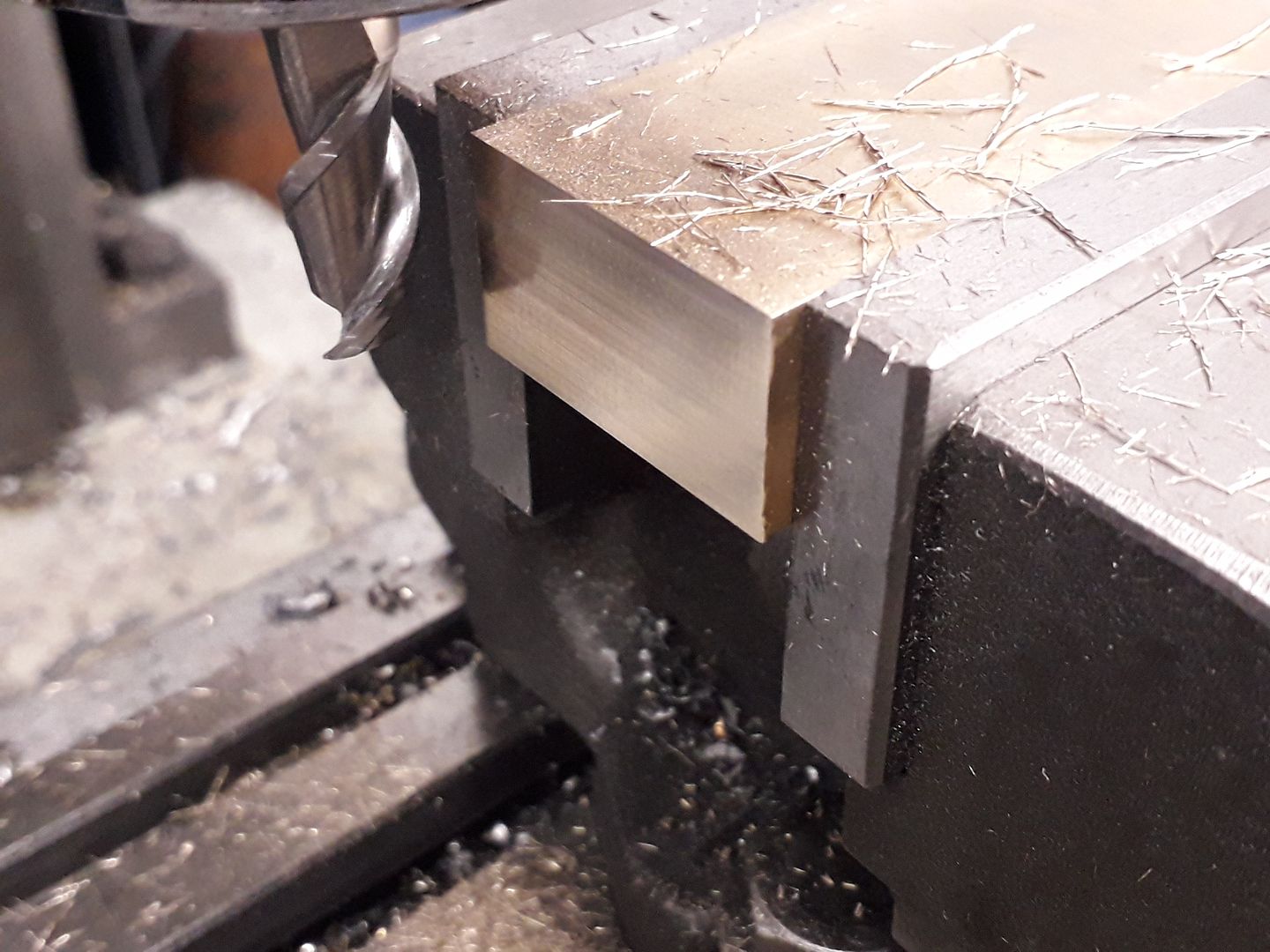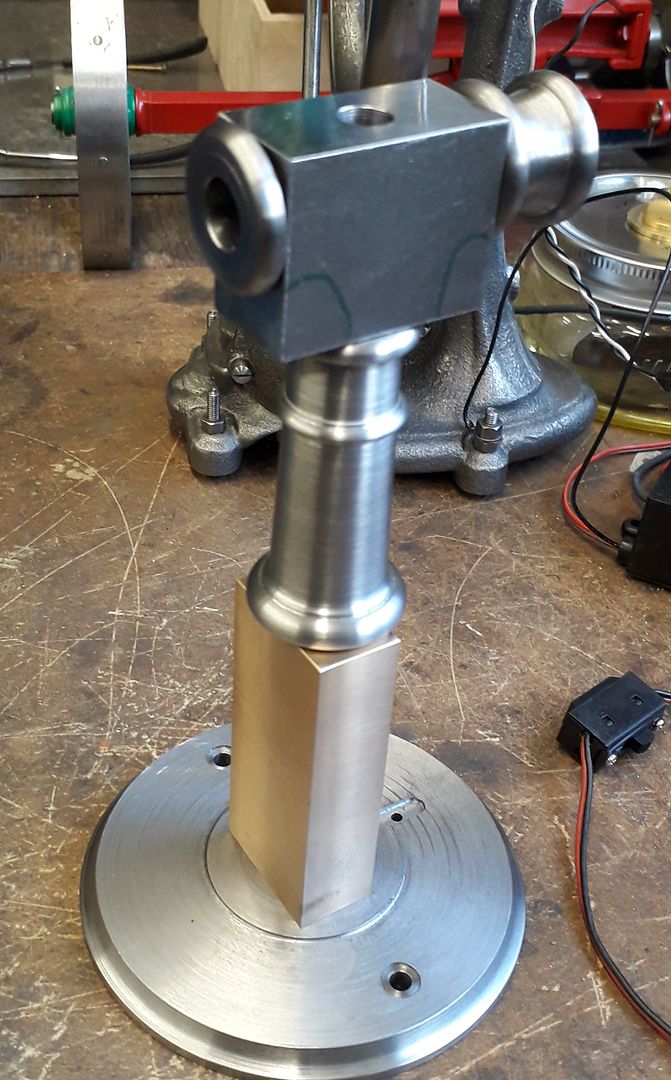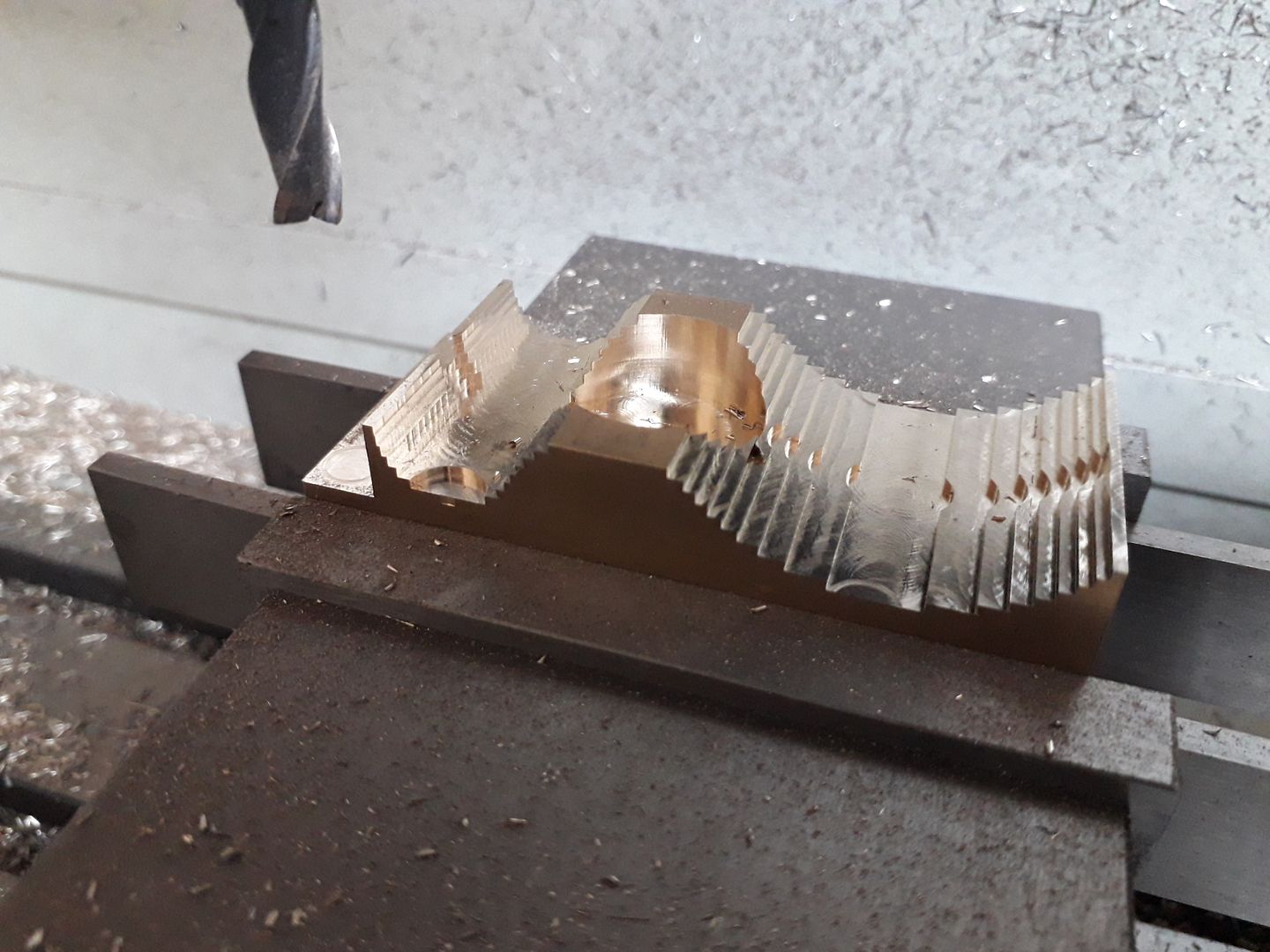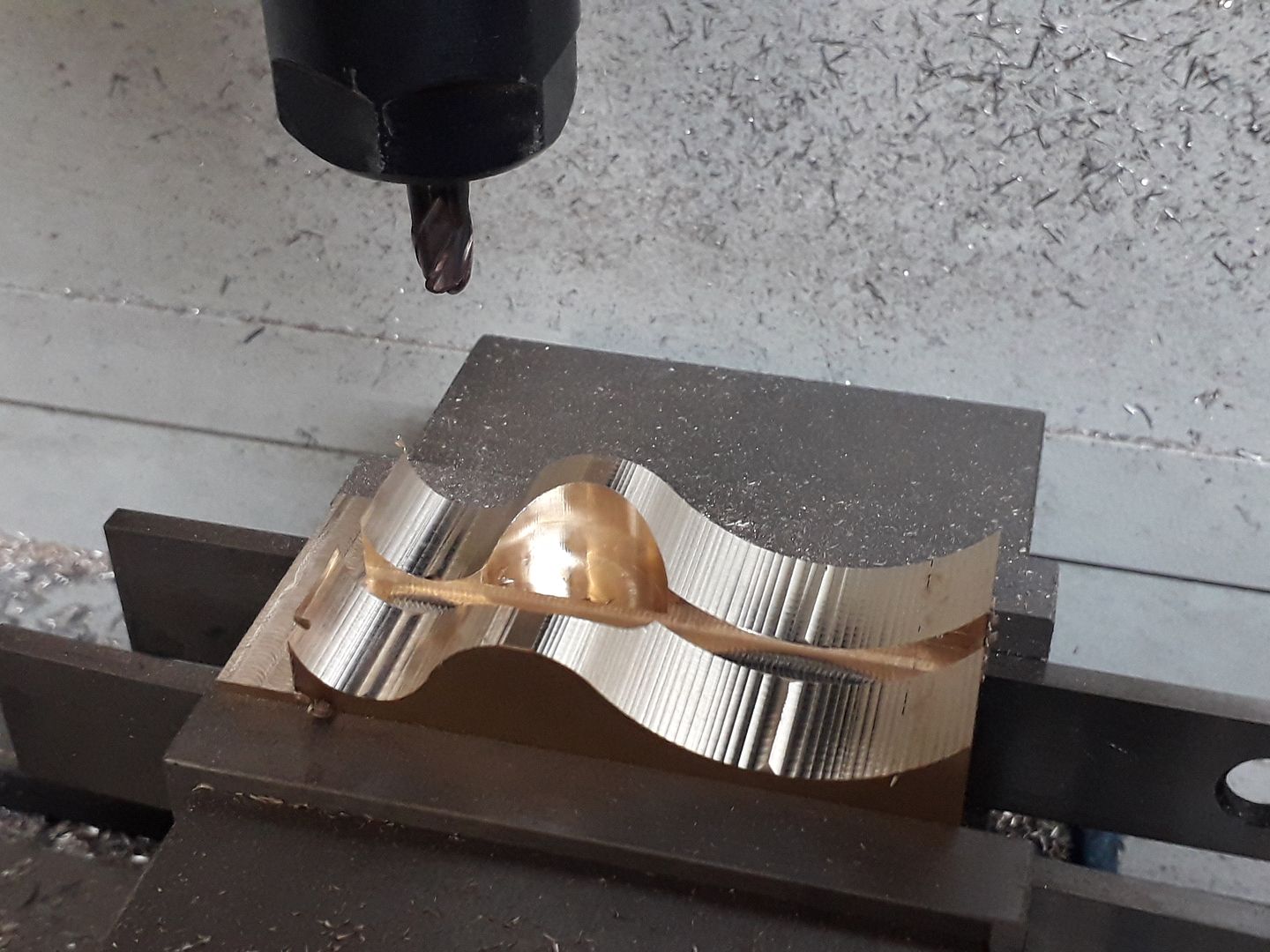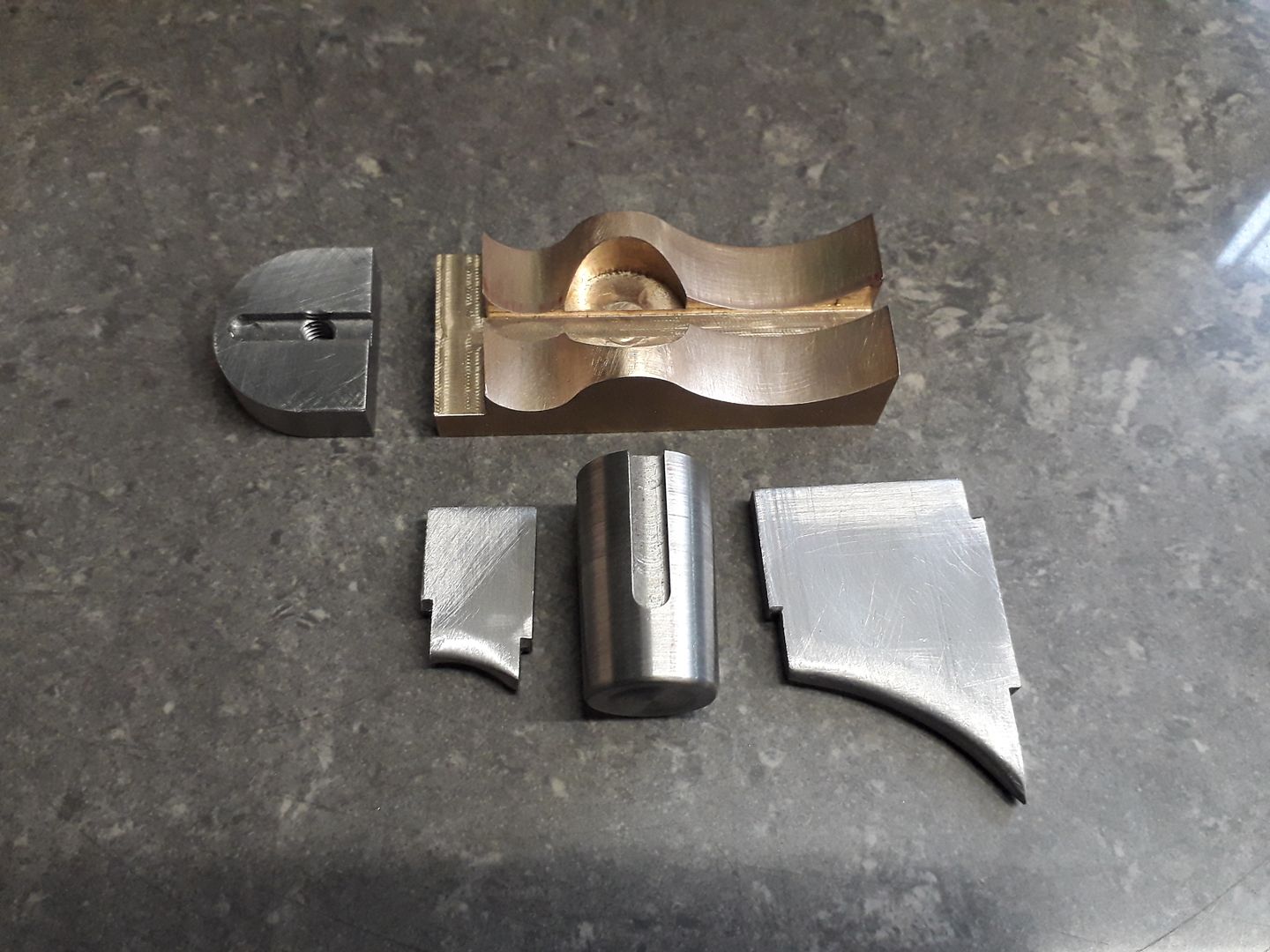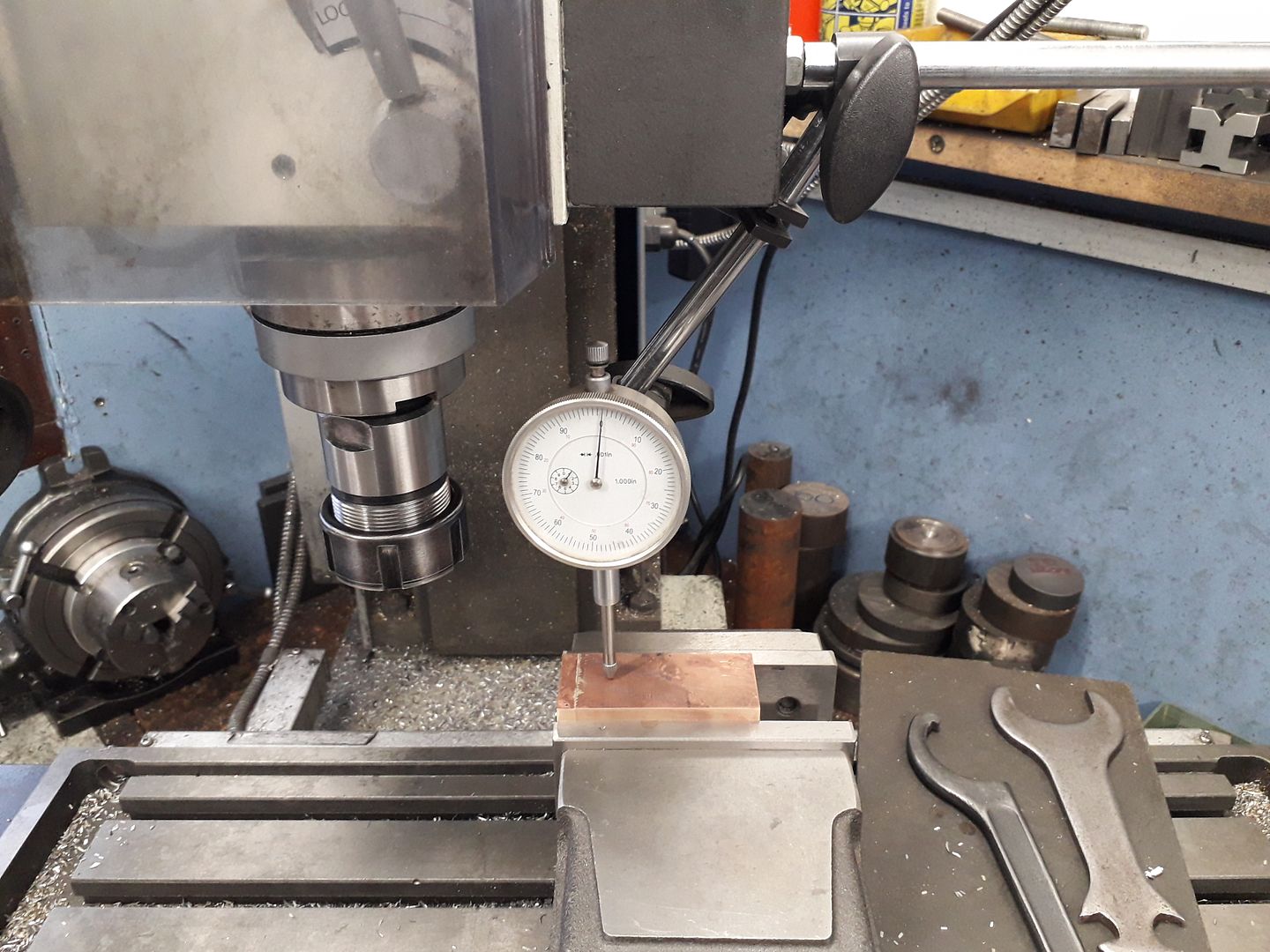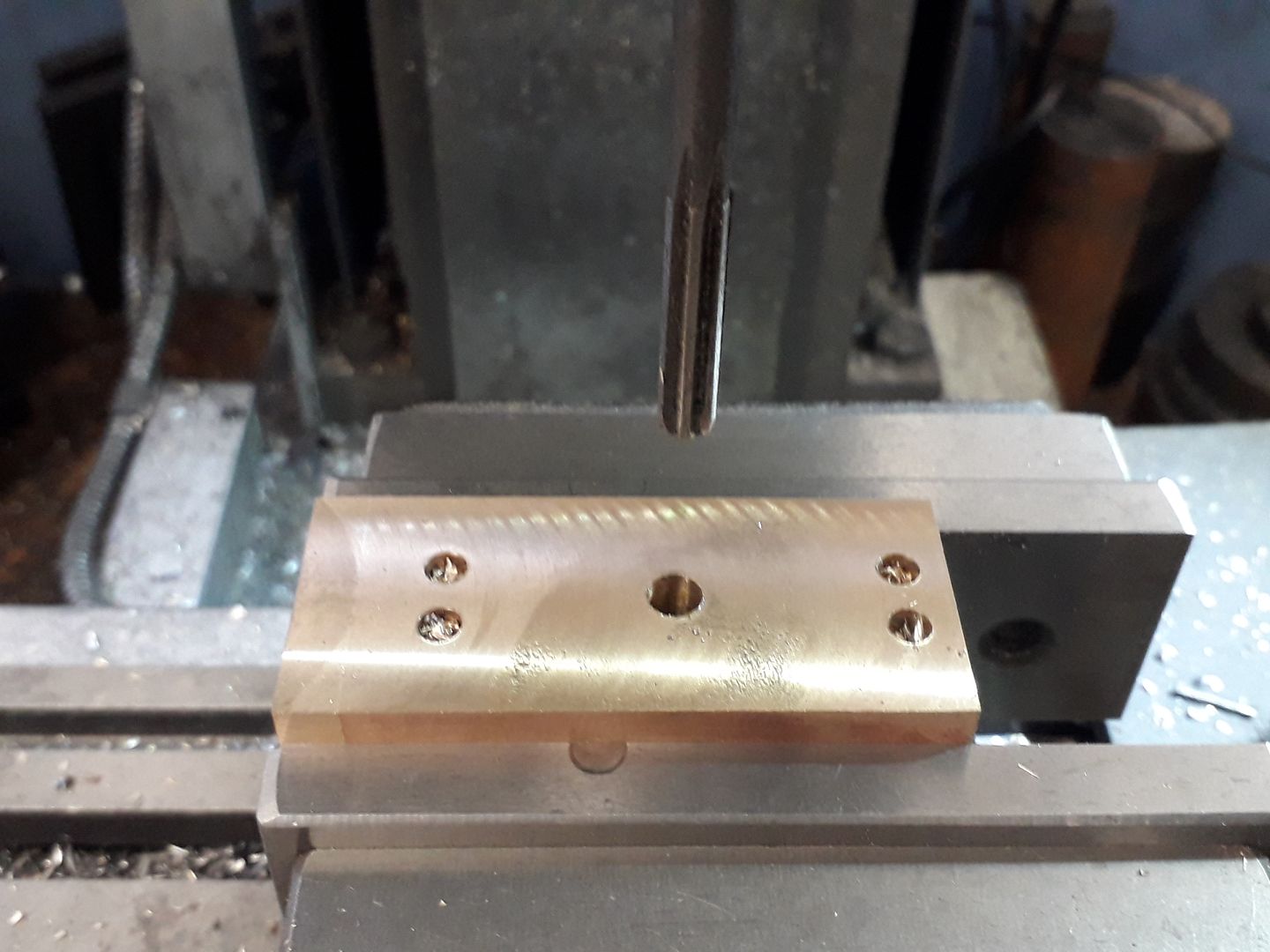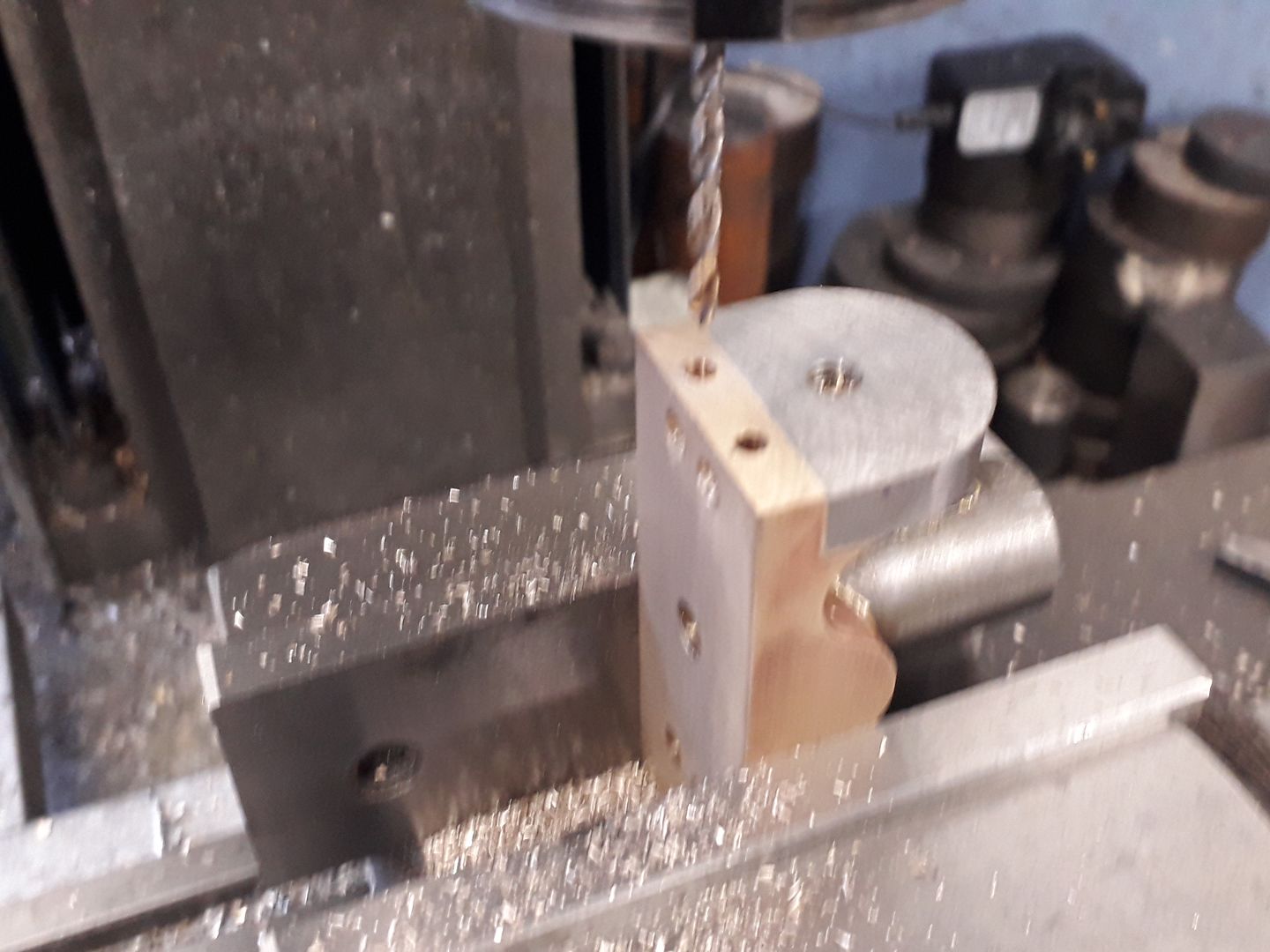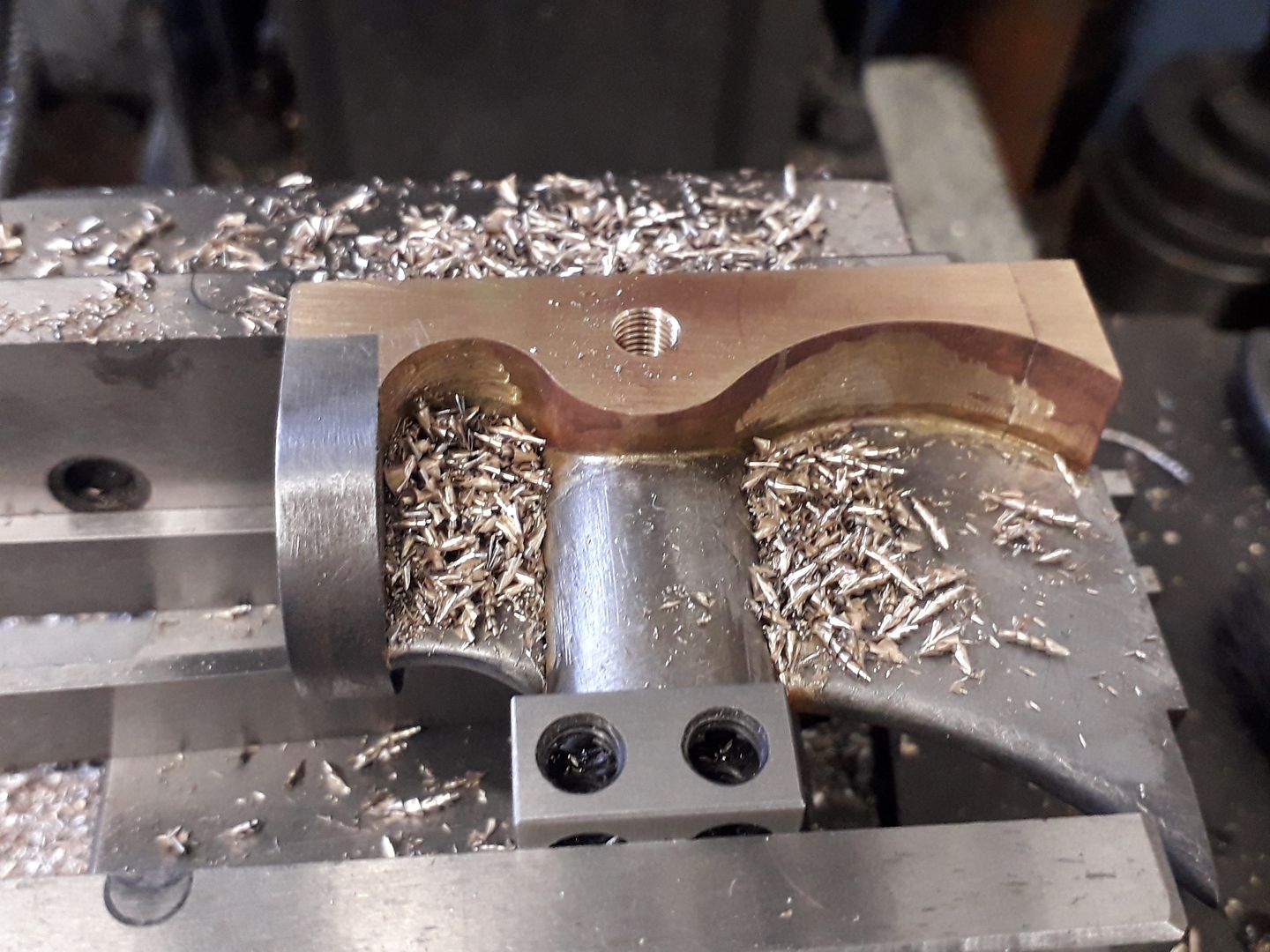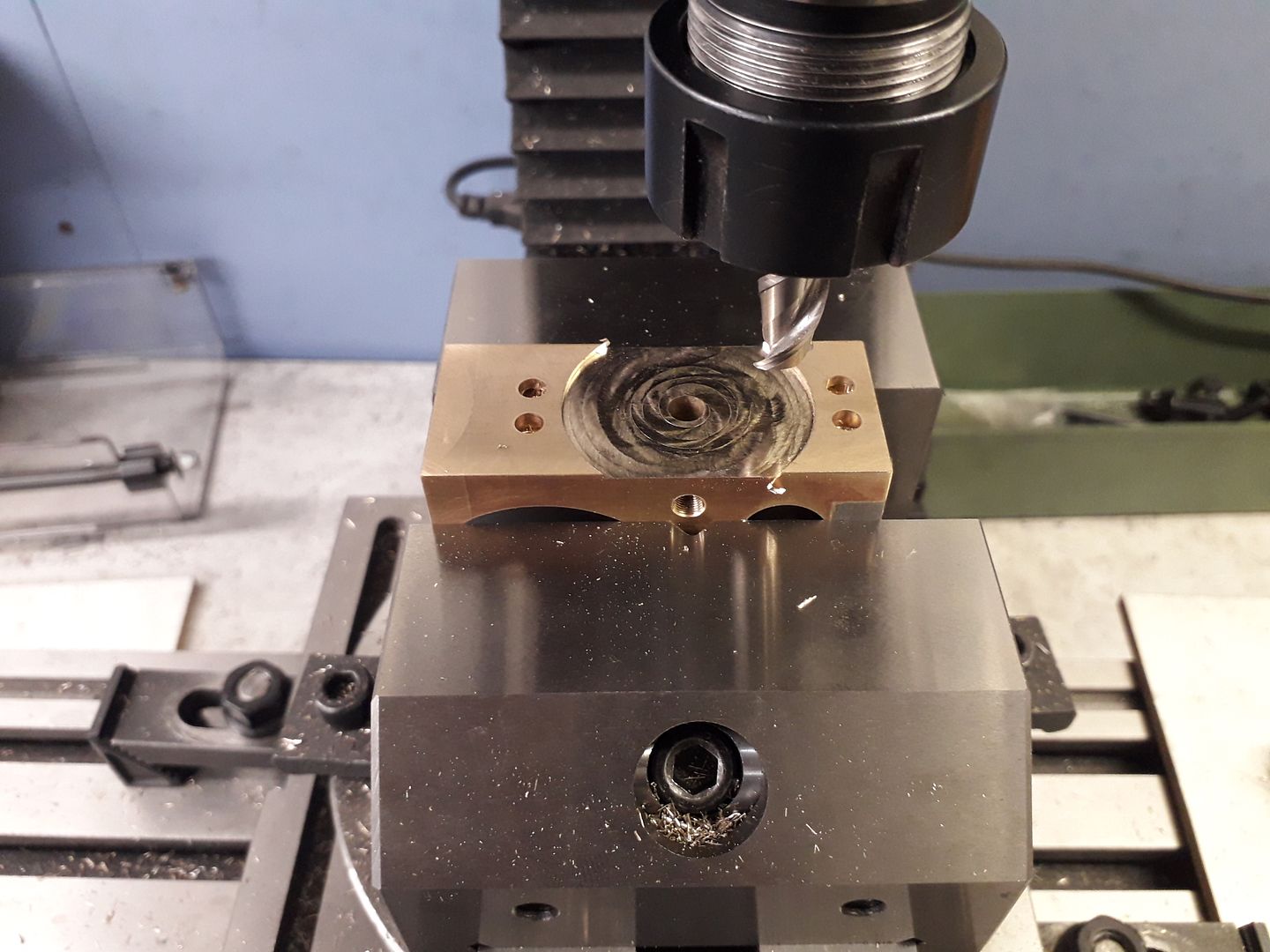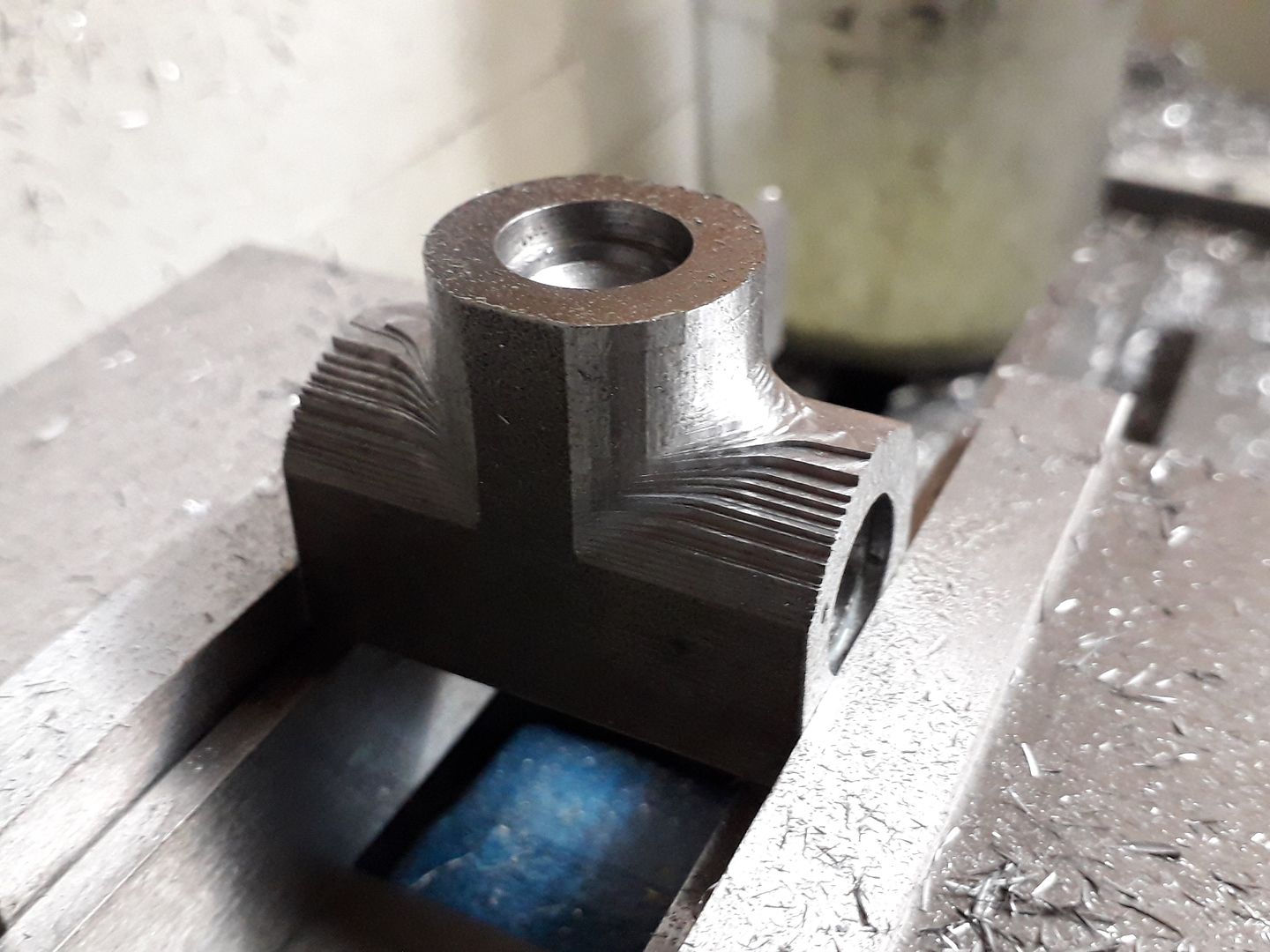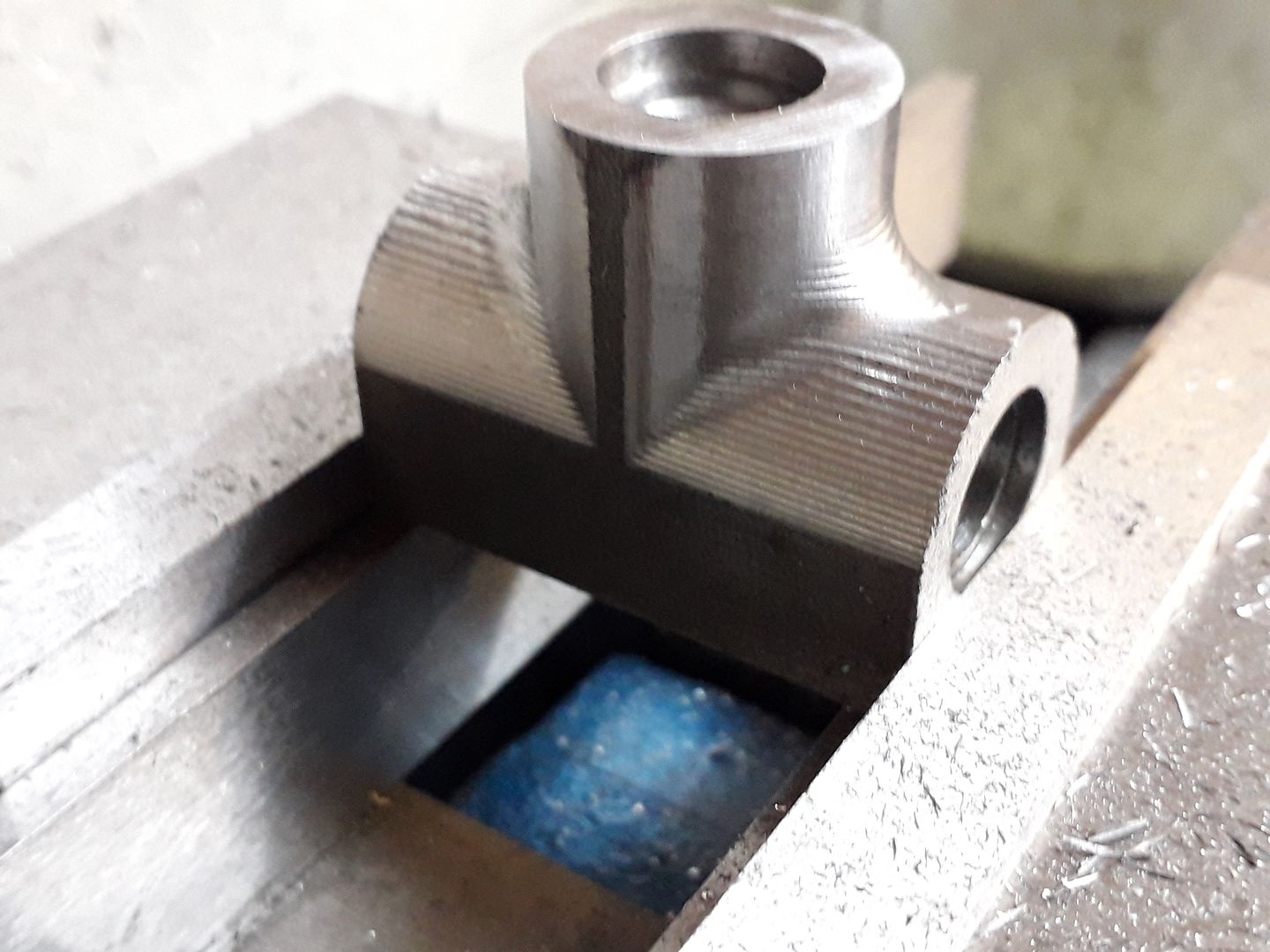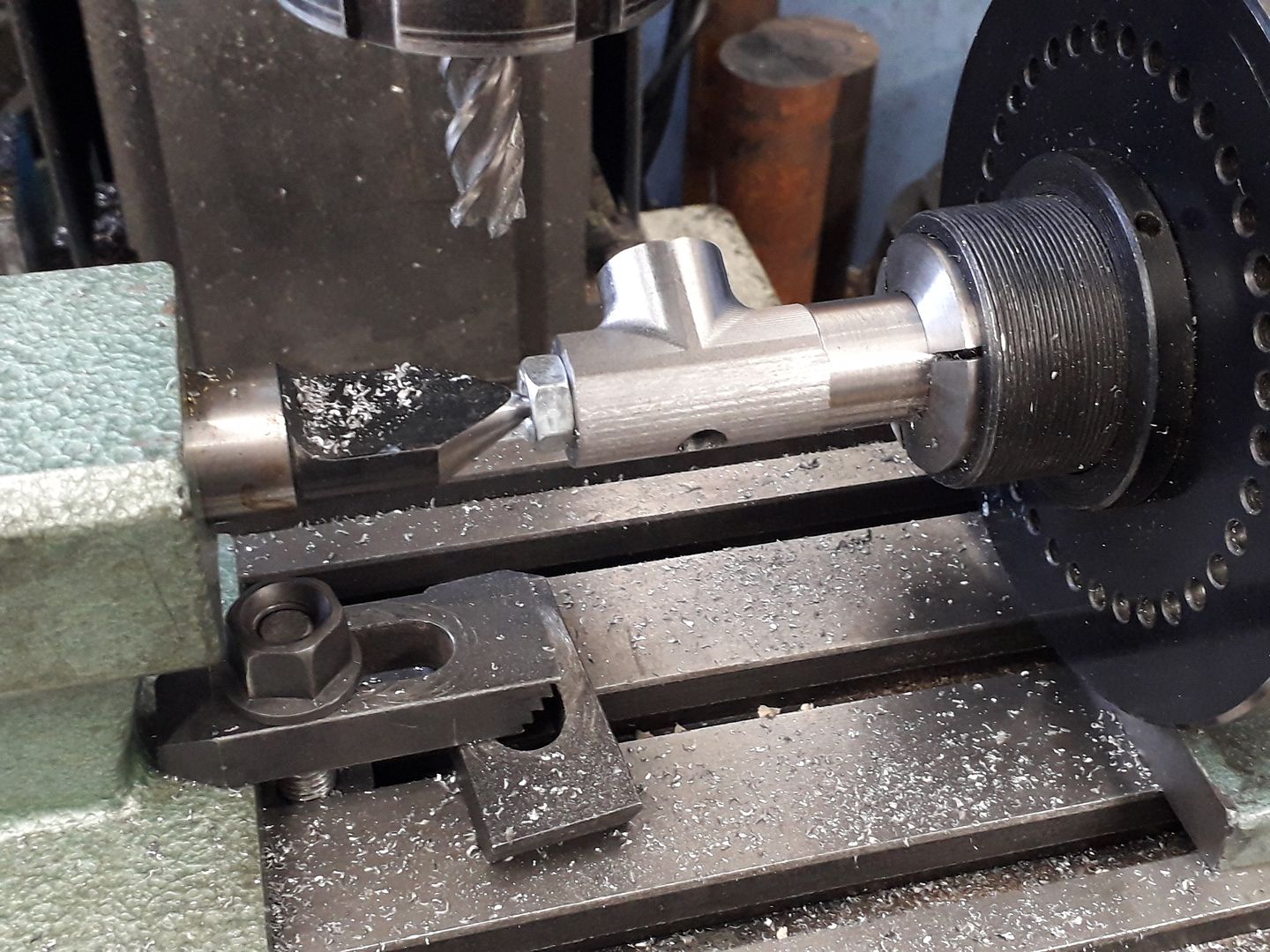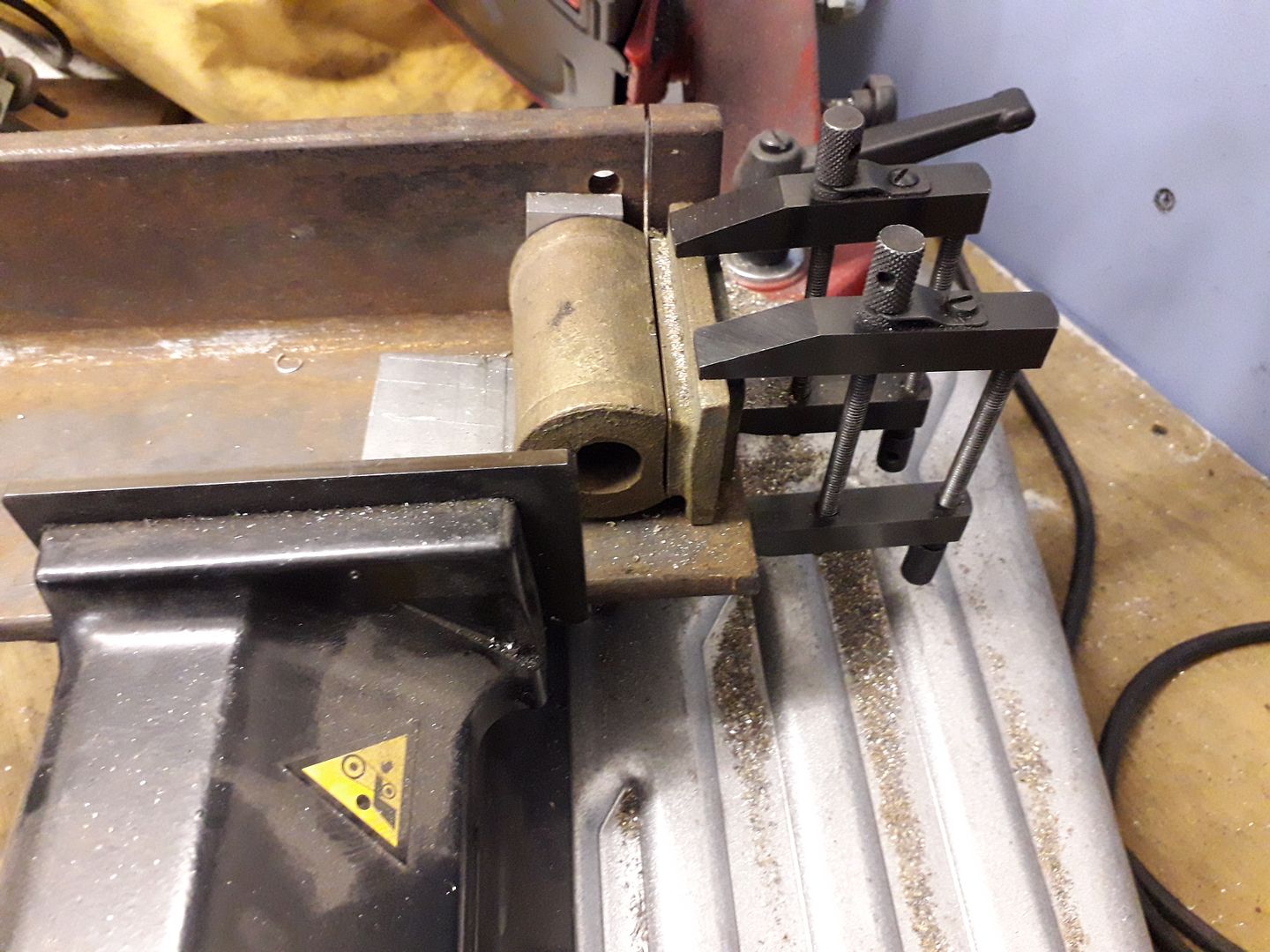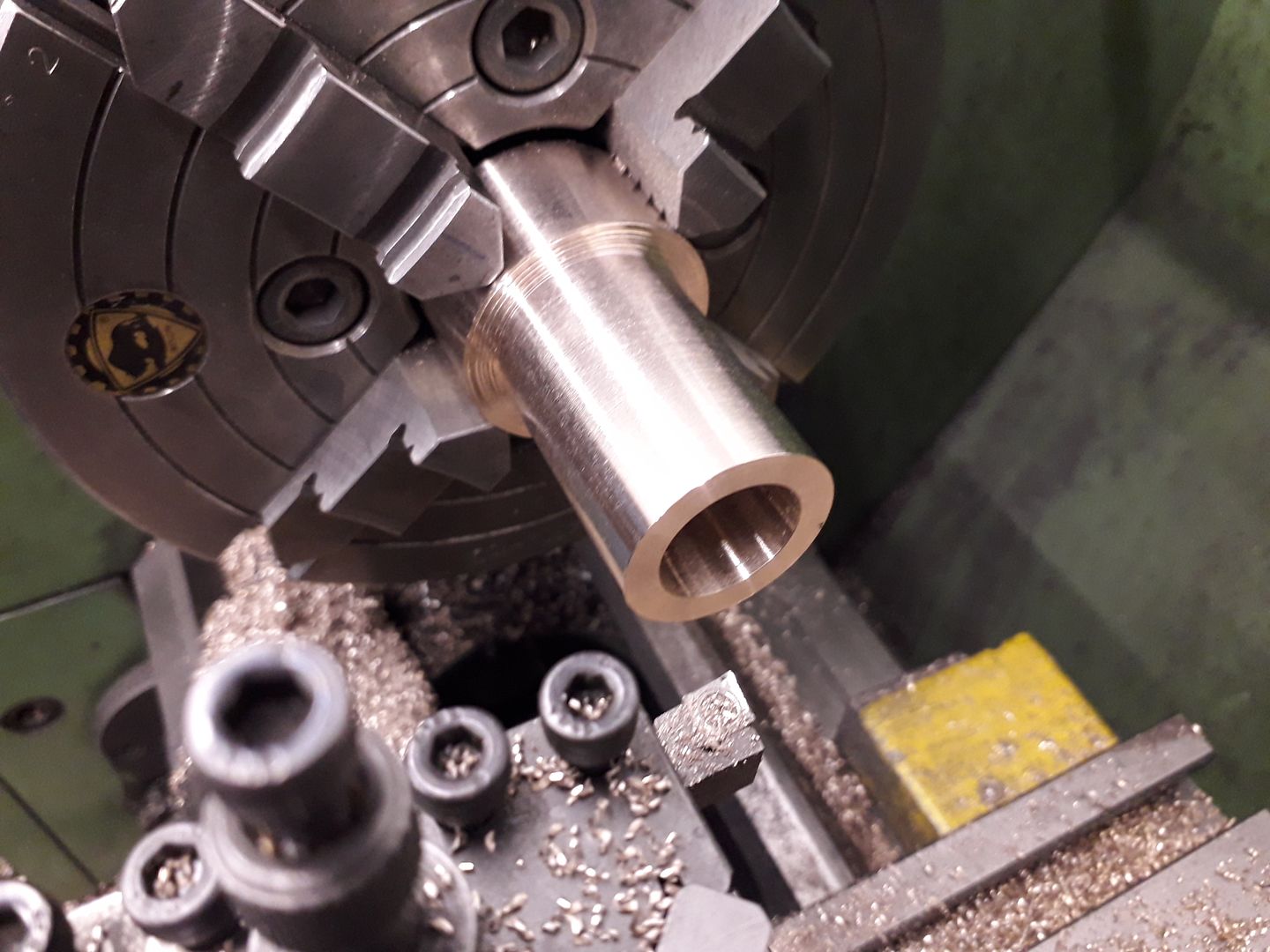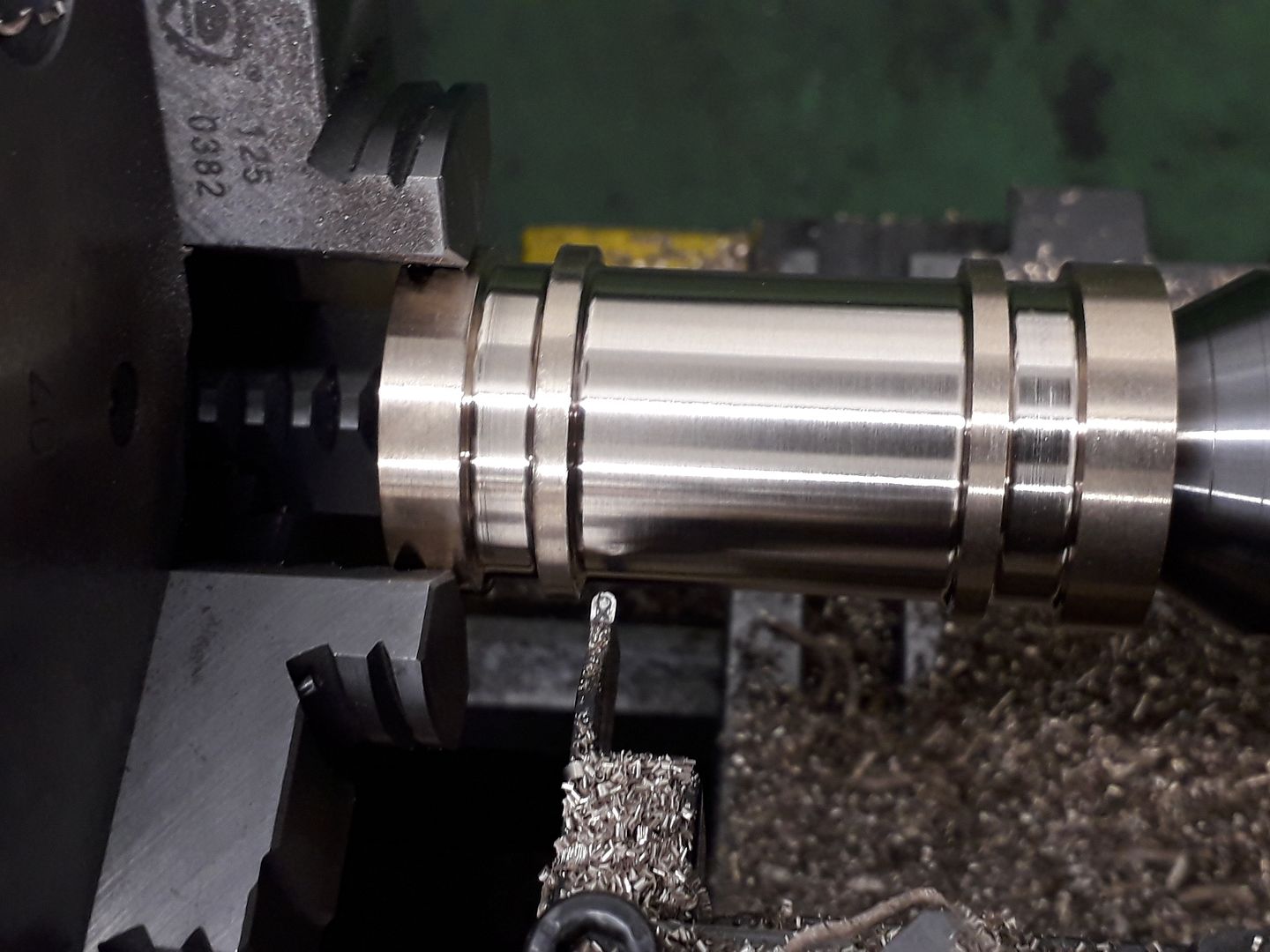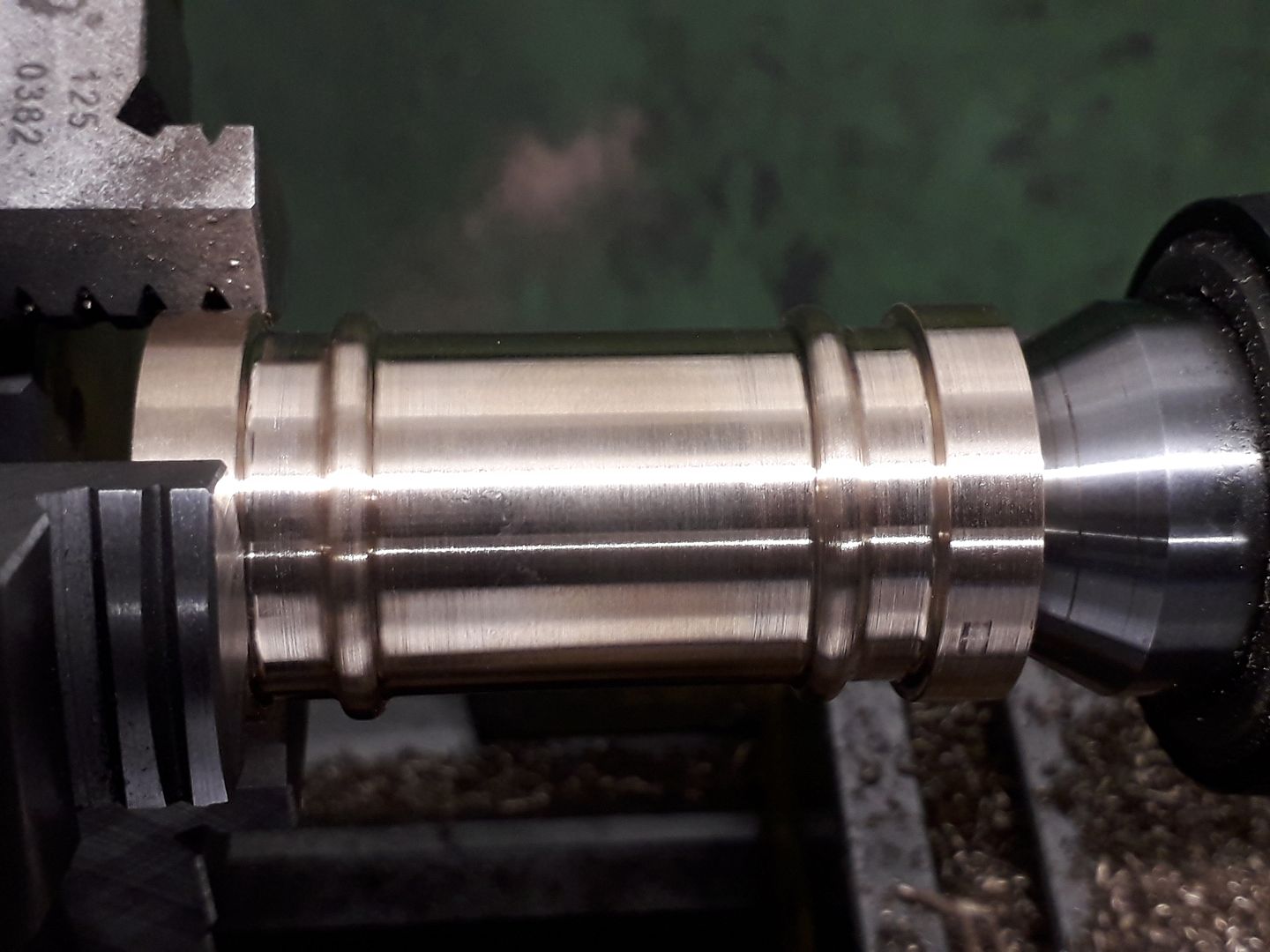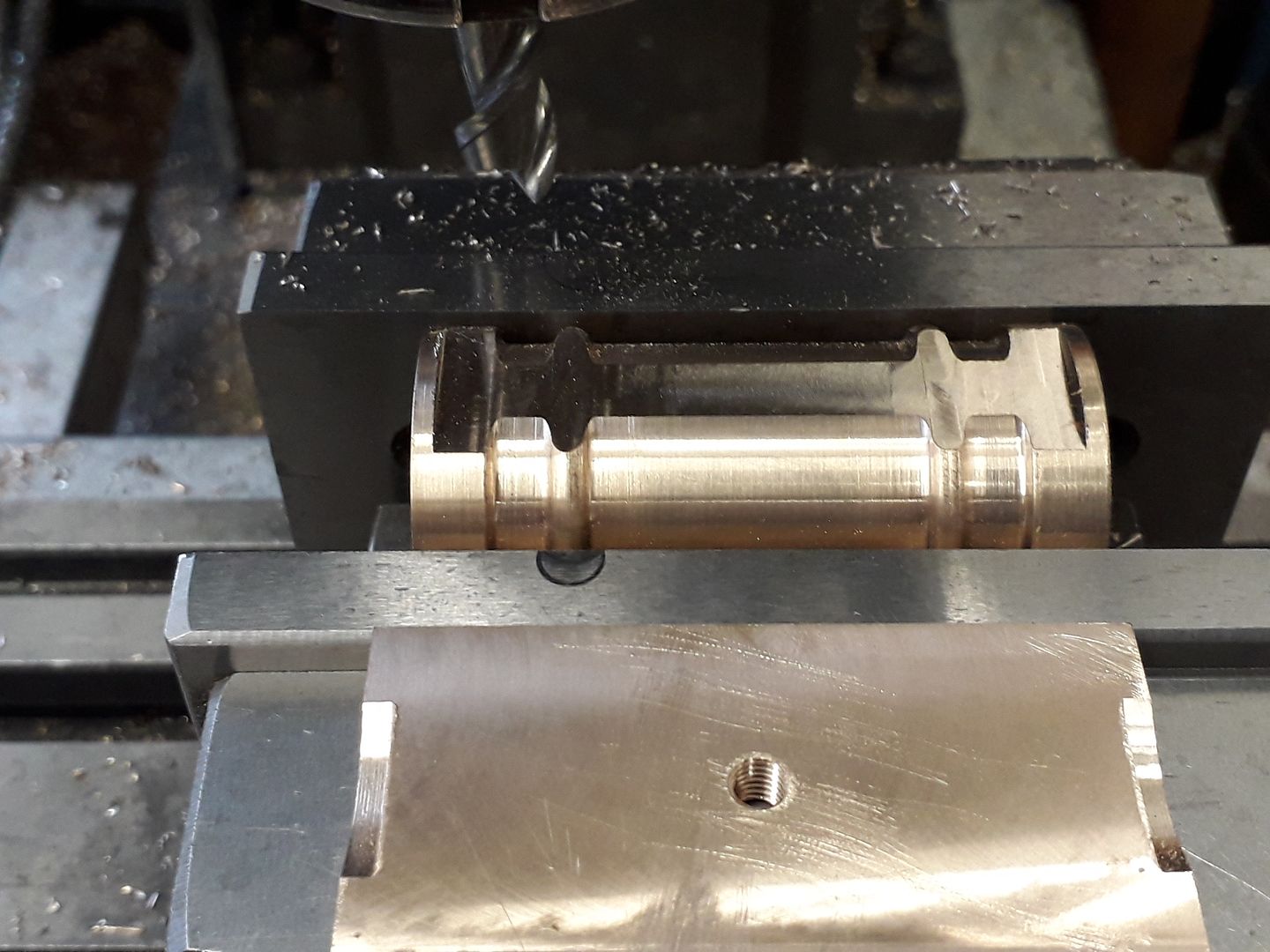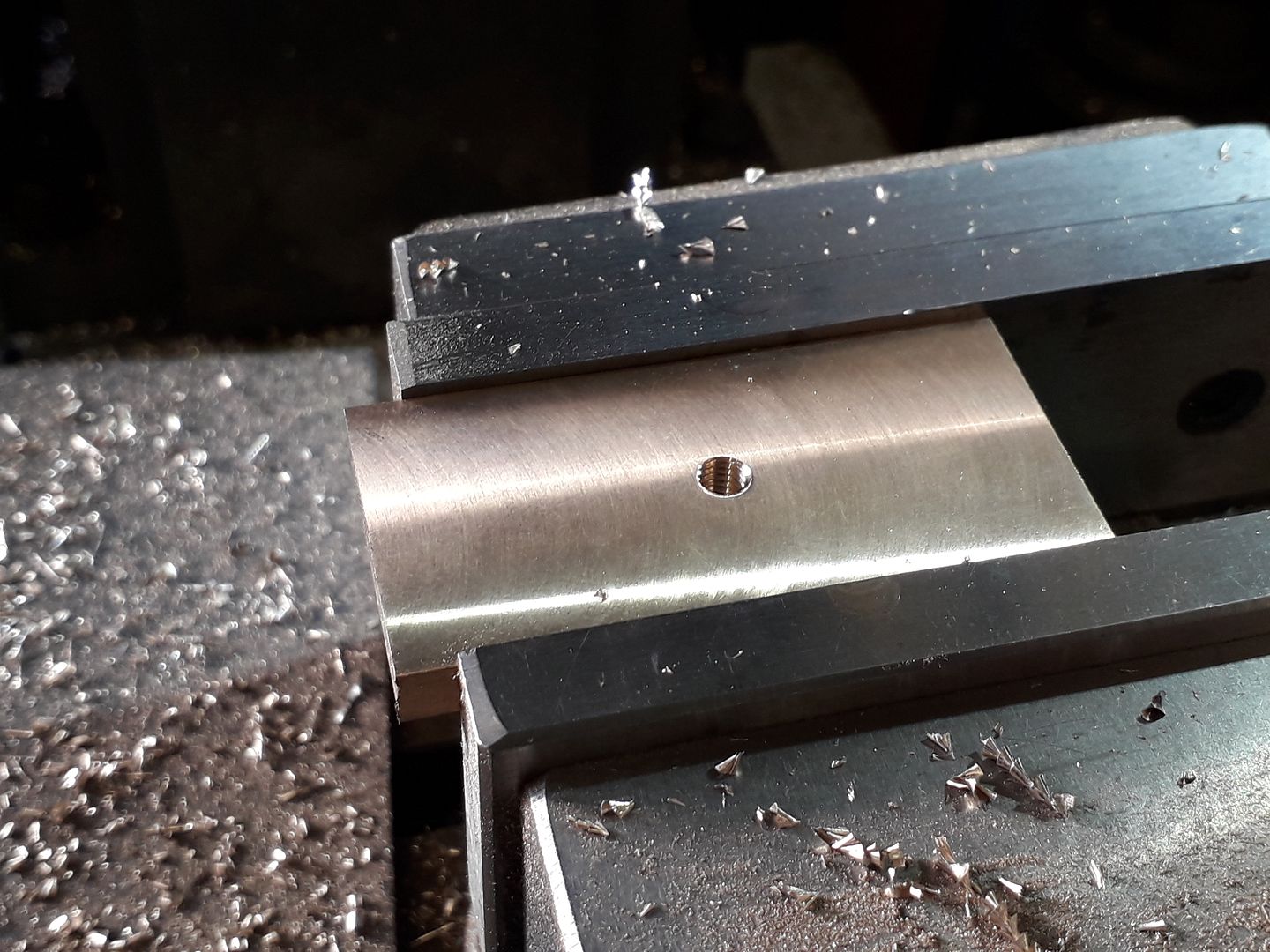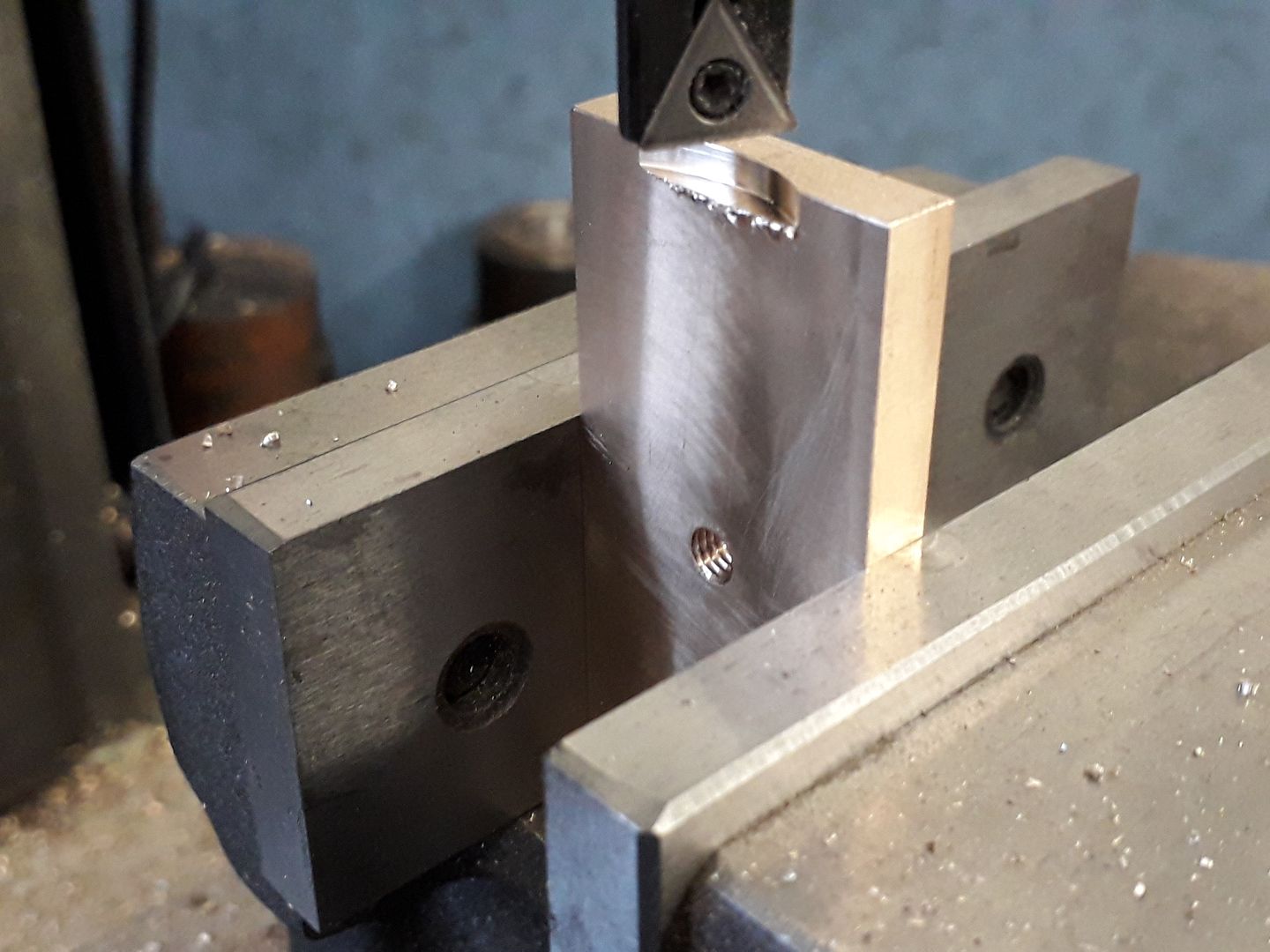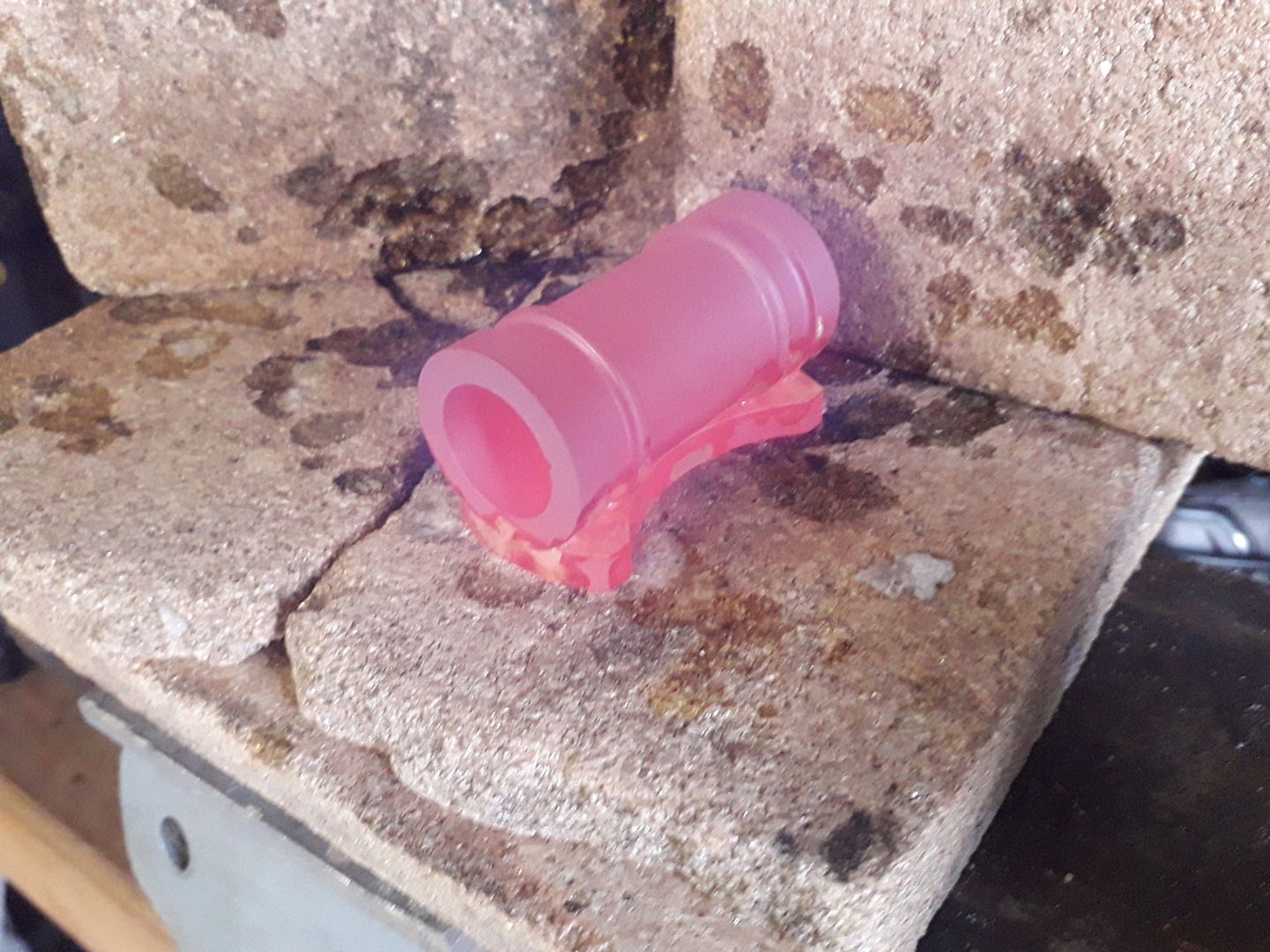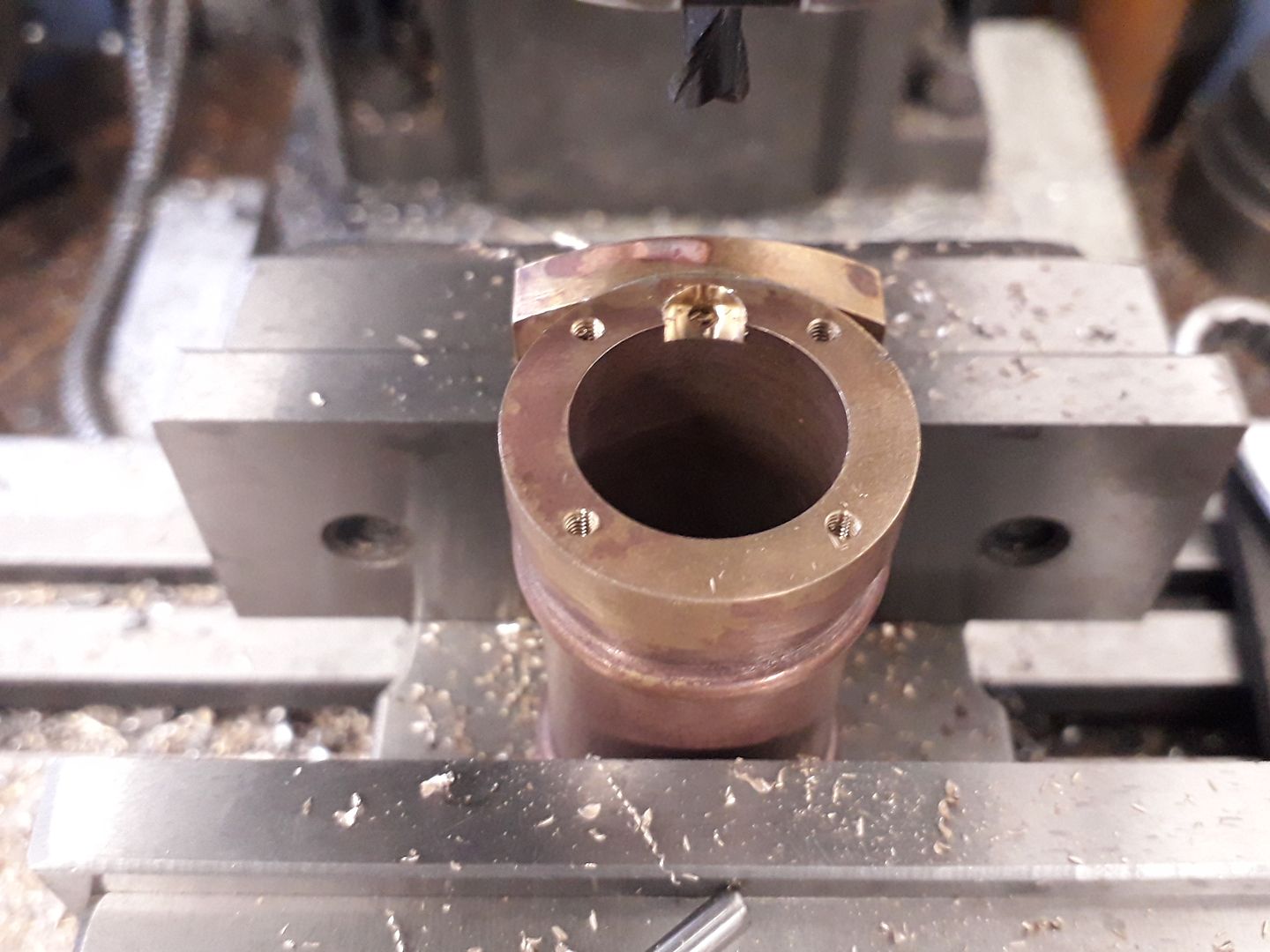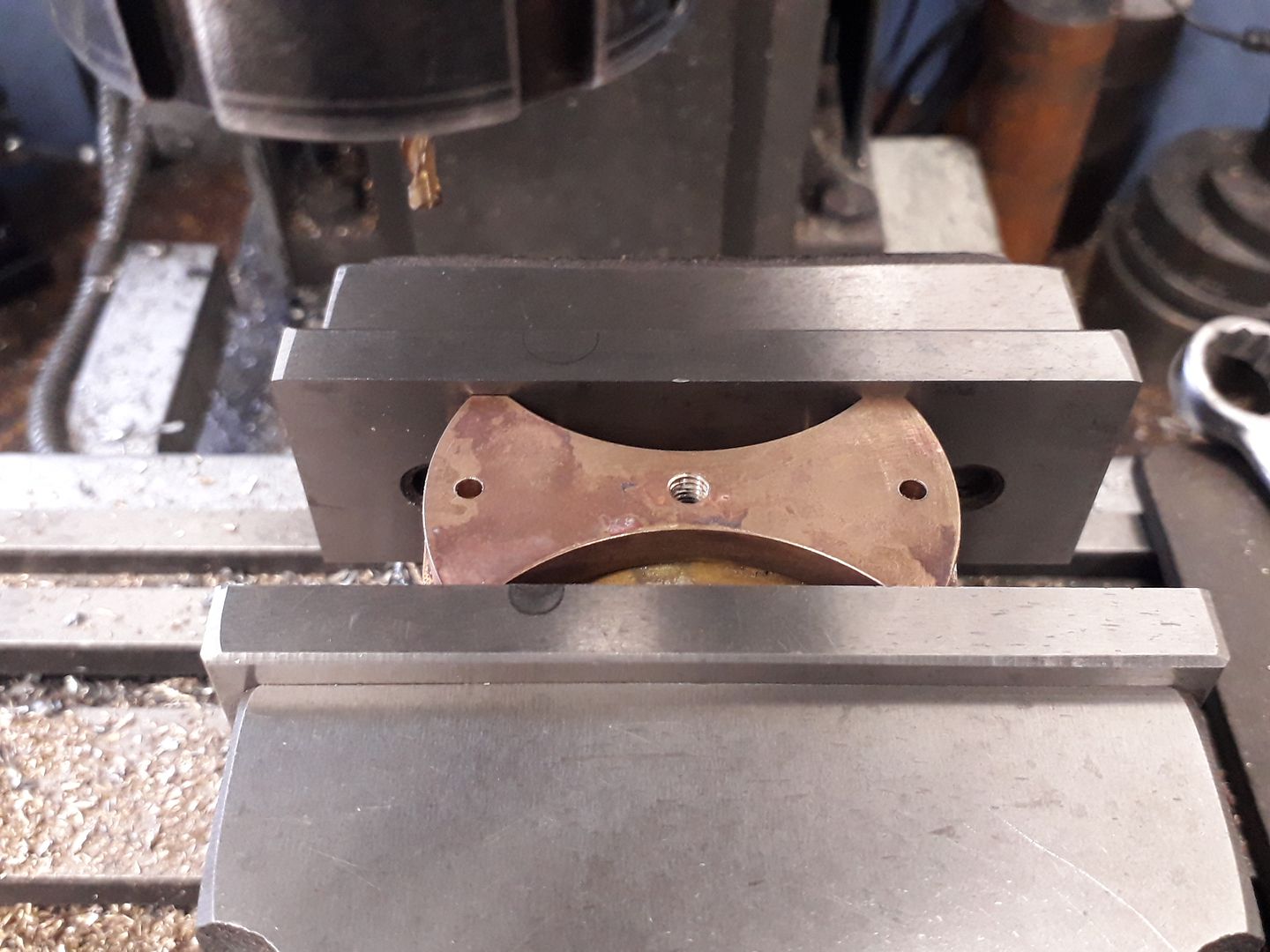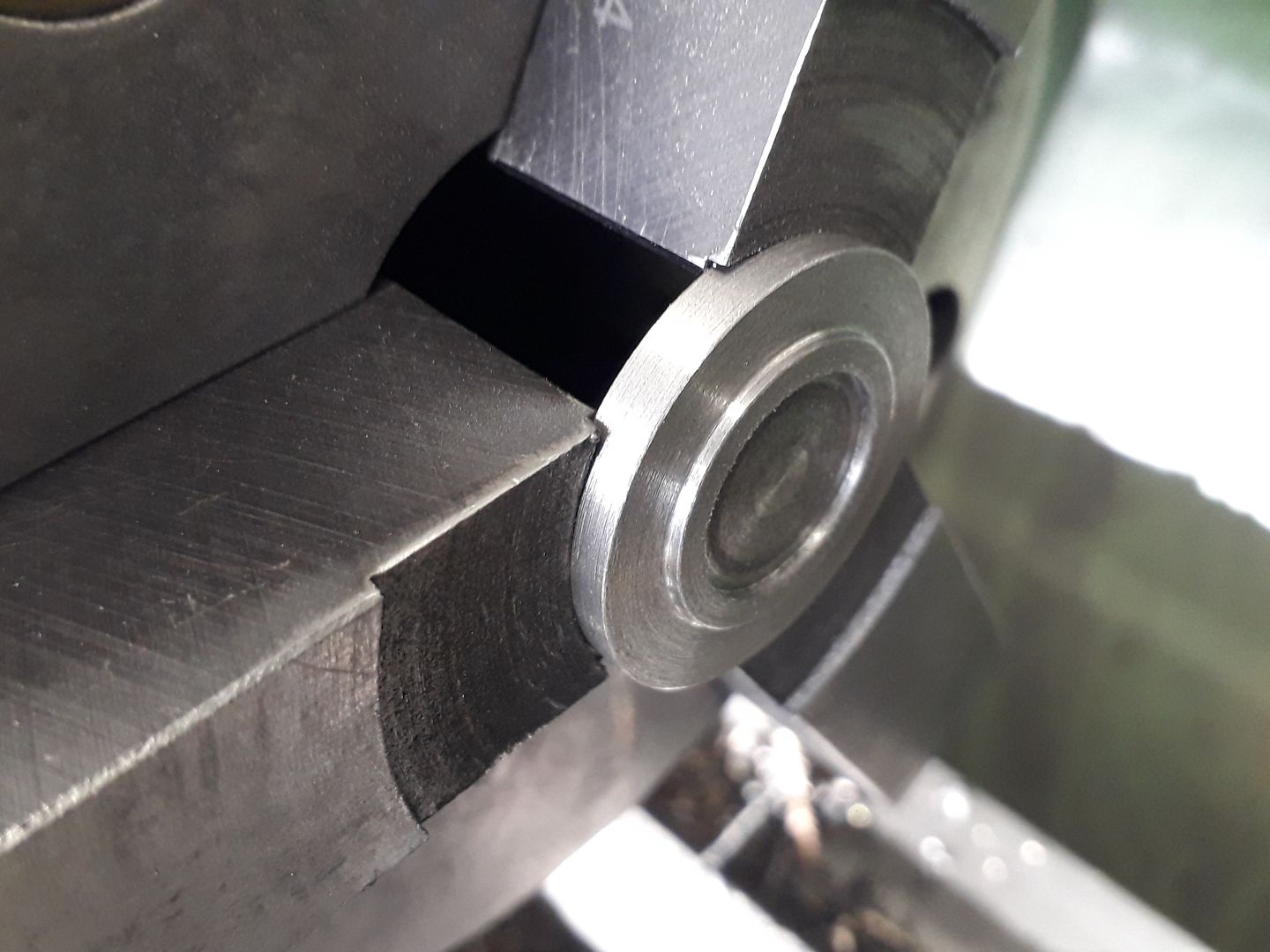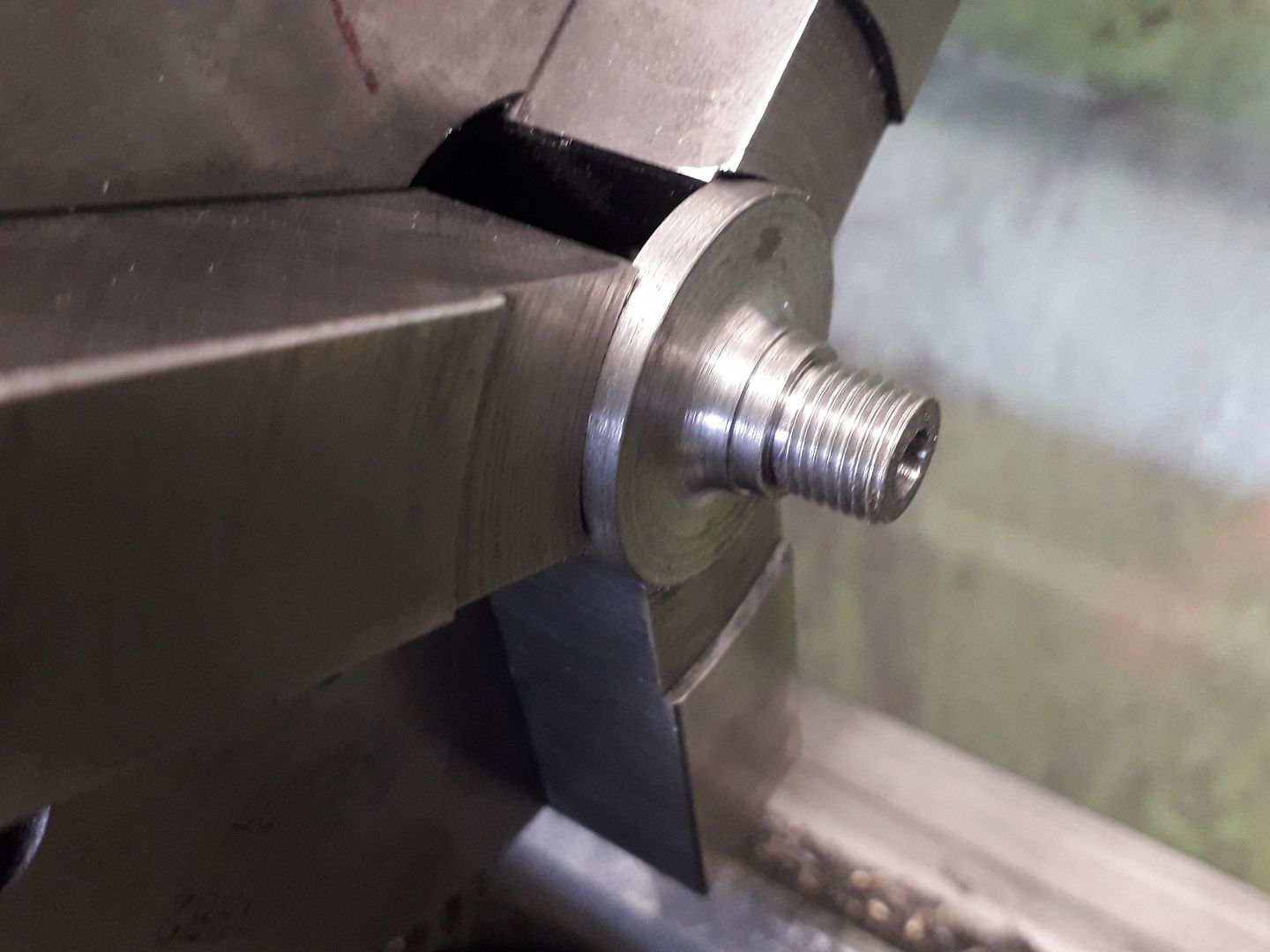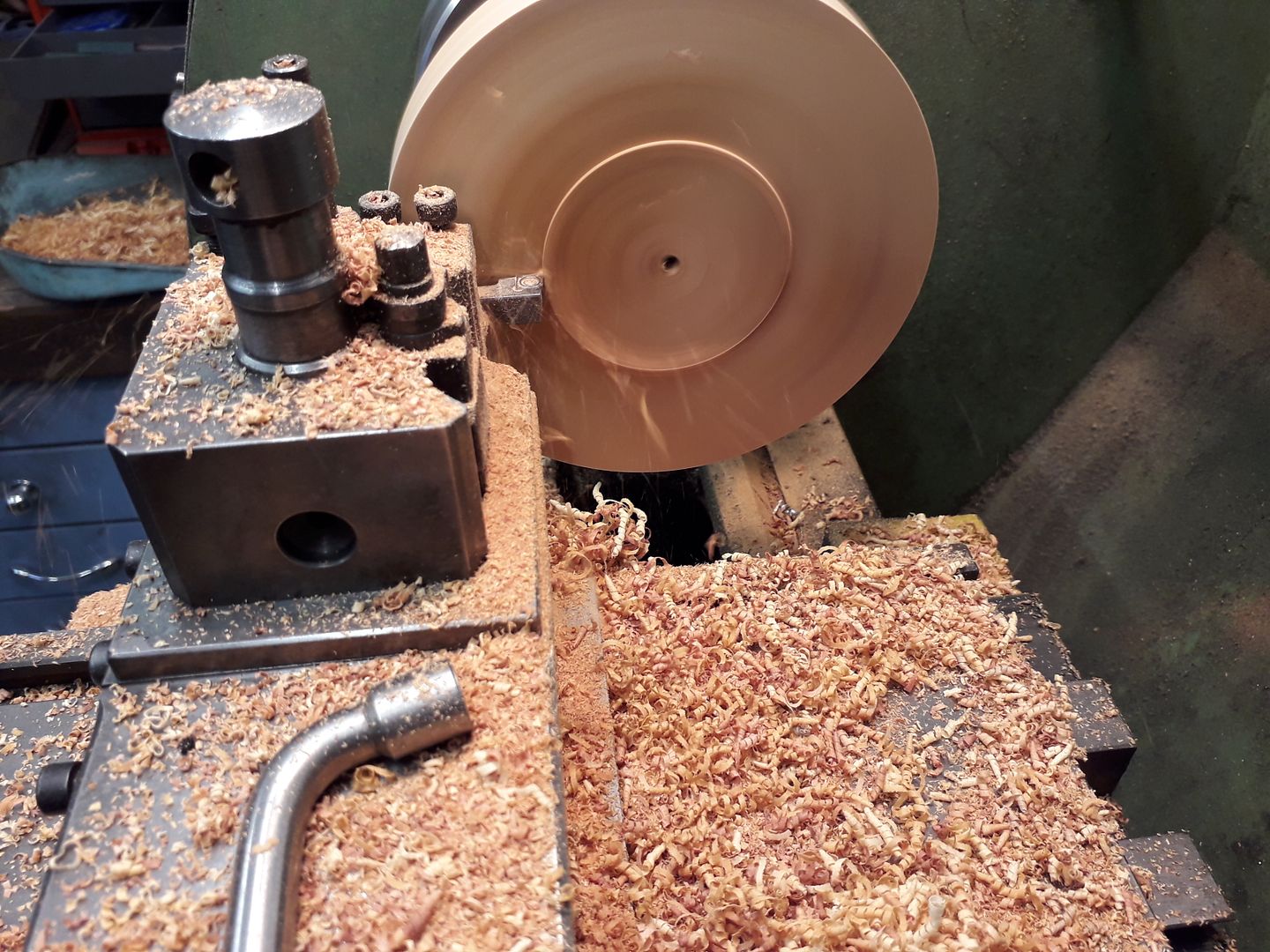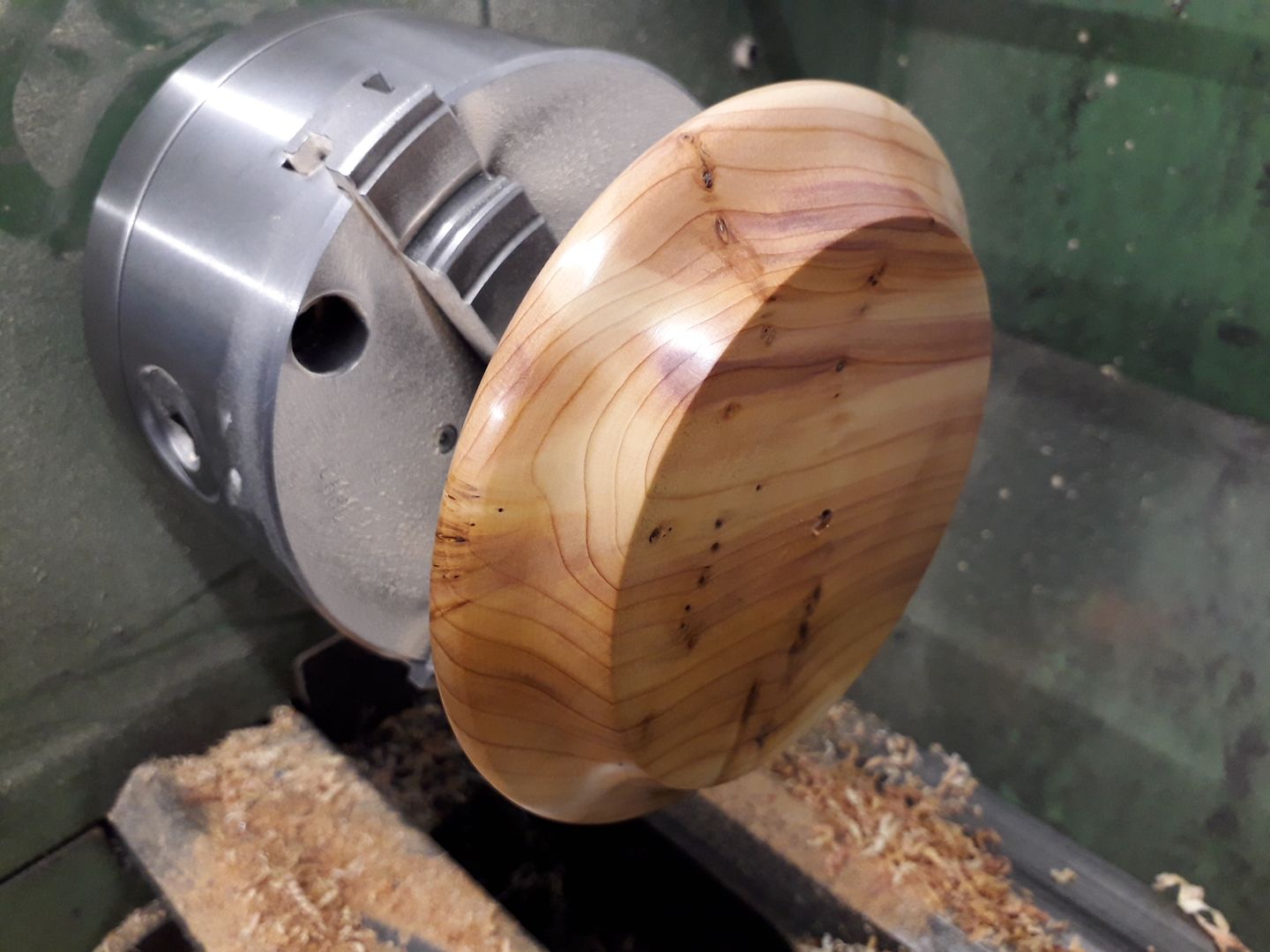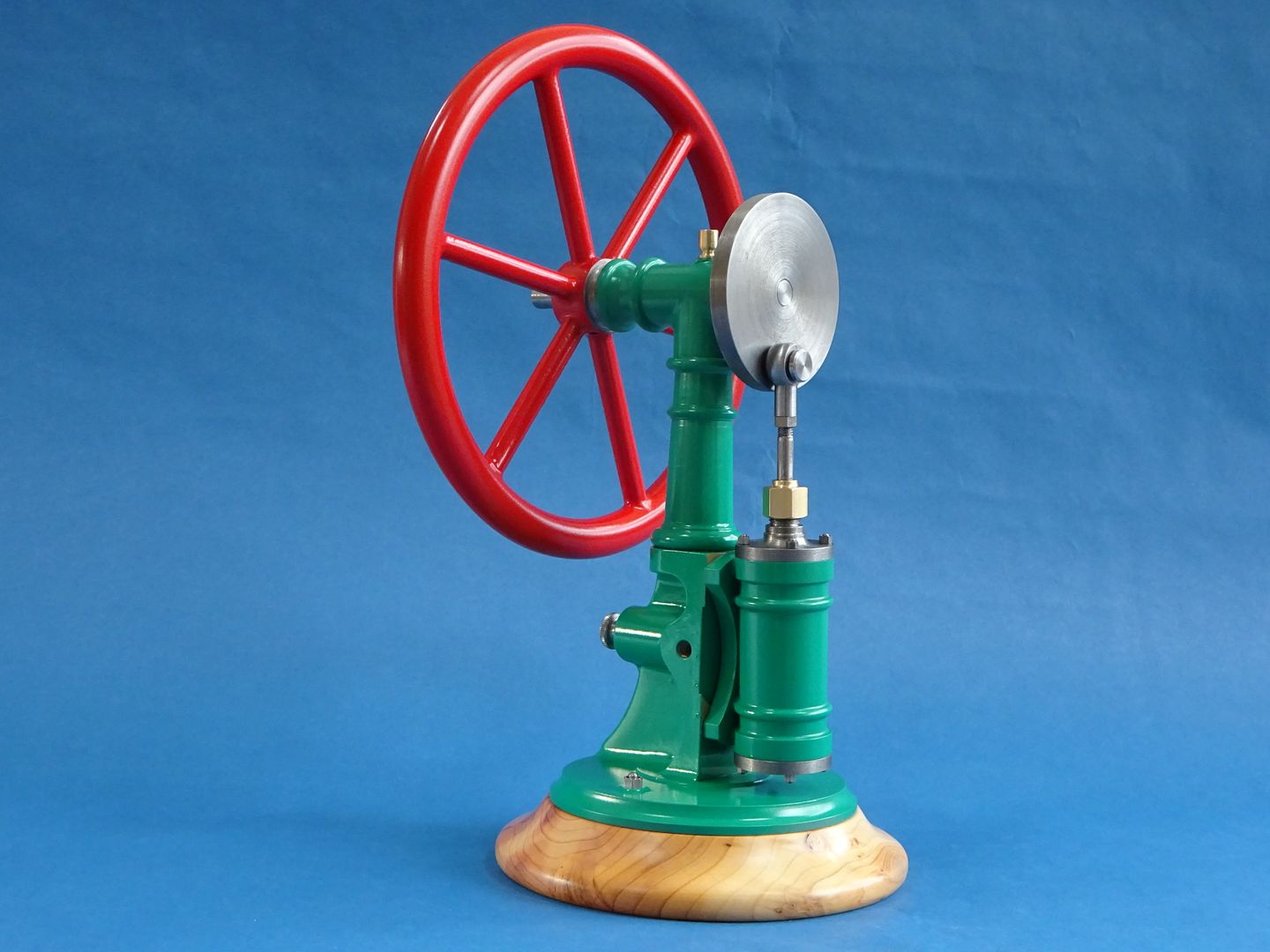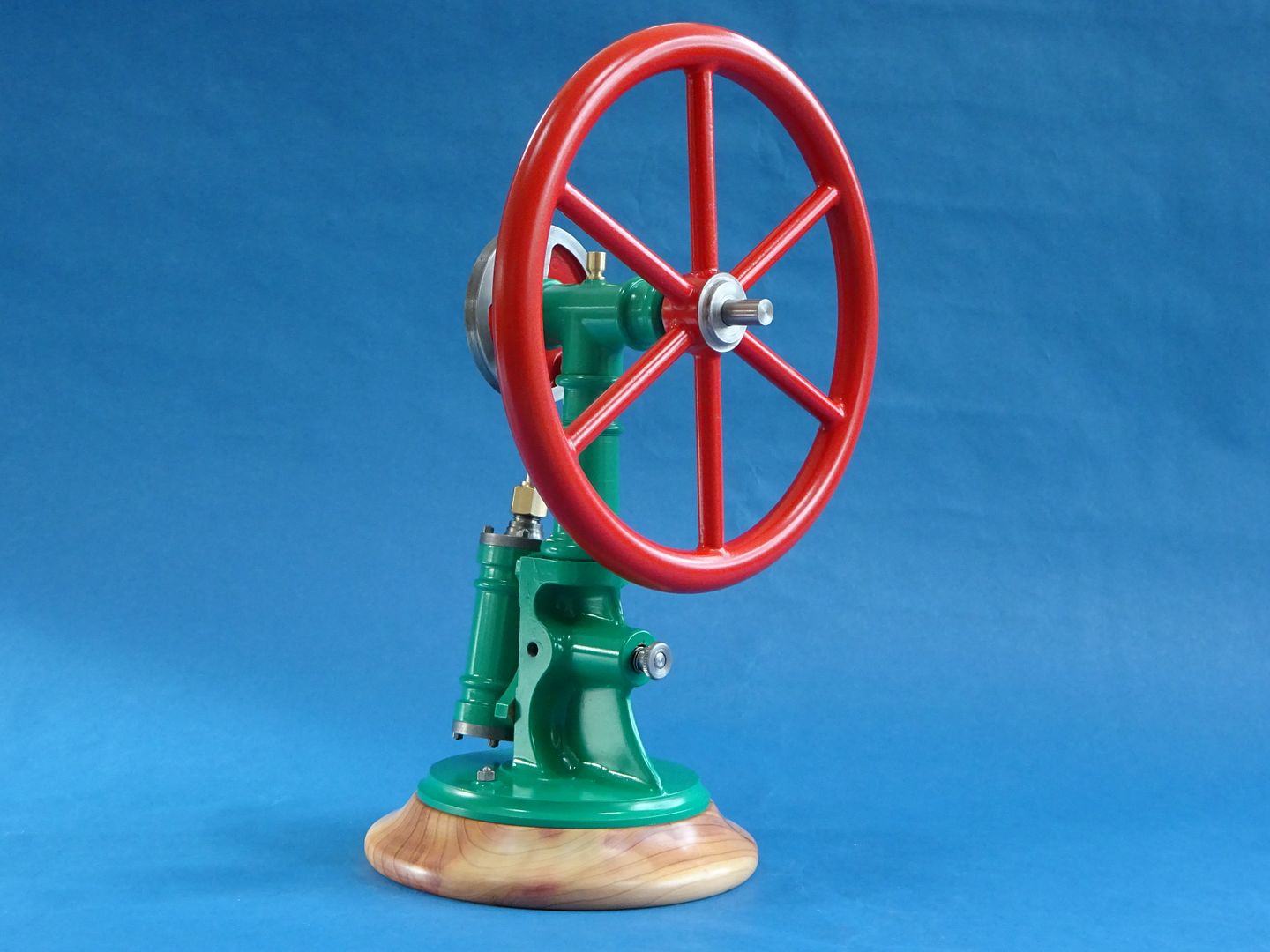Next job was to shape that block of bronze in the previous photo into something a bit more shapely for which I used the CNC though it could also have been done on a manual mill but not as quickly.
This video shows the 4 separate operations. First is boring the hole for the central pivot boss , then the adaptive cuts which basically rough out the shape leaving 0.5mm to still come off both done with a 3-flute 6mm cutter followed by cleaning up the top rebate and cutting the central slot with a 4mm cutter and finally the finish contour with a 6mm ball nose cutter.
Still of the part after the first two operations

And this one is when CNC machining complete

A little bit of filing soon removed the facets left by the mill though if I had let it run longer I could have used a shallower stepdown but as it is to represent a casting the odd bit of handwork gives a better feel. I also made the two stiffening webs from offcuts of 5mm plate, 8mm for the top piece and turned a draft angle on the pivot boss. Here are all the parts before silver soldering.

Once cooled and pickled to clean it up the valve block was clocked level in the mill vice as there was no flat surface below to sit on parallels. You can also see that the solder I used to add on the extra bit of bronze had melted during the assembly soldering so just as well it was also screwed in place.

After skimming the port face back to final dimension the four ports were drilled and a central hole drilled and reamed right through for the pivot. Not obvious from the photos but I deviated on the traditional sizing of port and cylinder holes by making the port ones larger, this is supposed to help the cylinder fill and empty as the full area of the cylinder port is open earlier and closes later, more details on this web page

The ports were then extended down to where the inlet and exhaust fittings would be with long 3mm holes, the ends of these were later plugged with small bronze plugs loctited into place. Sorry for the fuzzy photo.

The two tapped holes for inlet and exhaust were added, M5 x0.5 for the inlet and M6 x 0.75 for the exhaust

Finally with the part held in a vice on top of the rotary table a 1mm deep recess was milled around the pivot which reduces friction and makes it easier for the cylinder to seat, also less surface to lap which makes the process go faster.

 PatJ.
PatJ.

